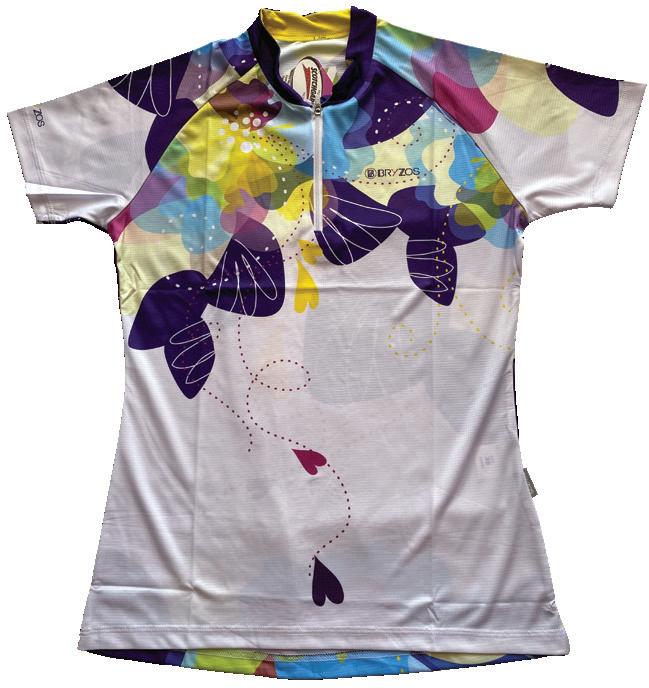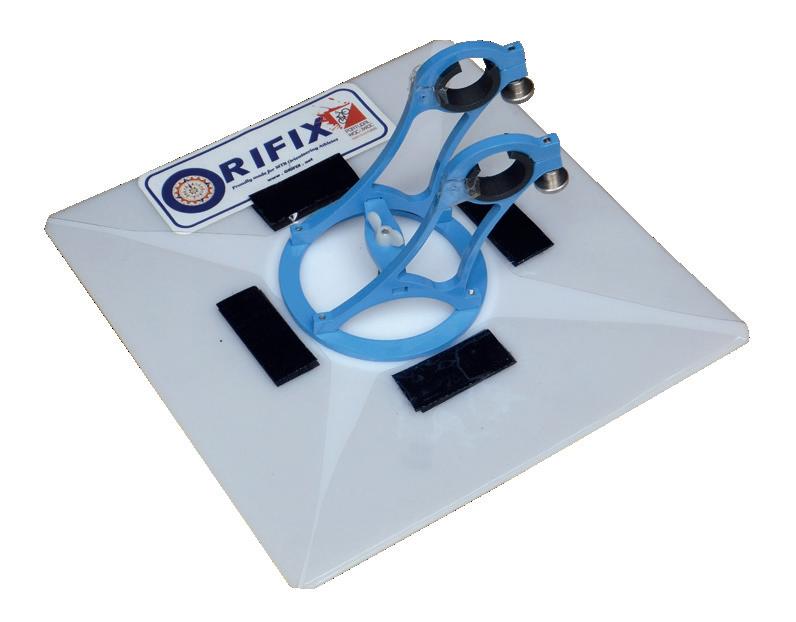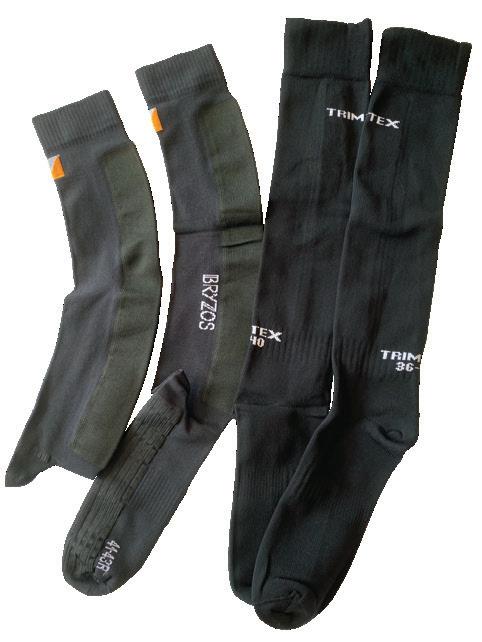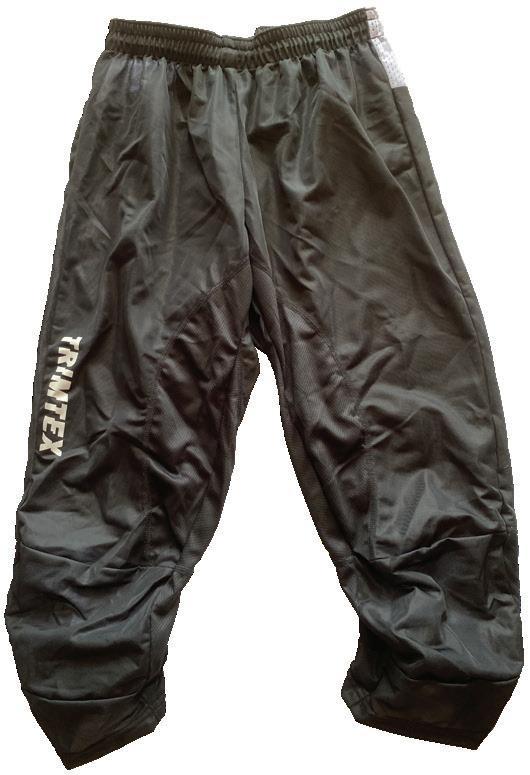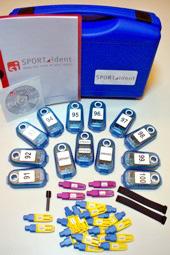THE AUSTRALIAN




•Oceania Championships 2025
• Asian Championships 2024
• WOC 1985 in Australia
• Xmas 5 Days 2024










•Oceania Championships 2025
• Asian Championships 2024
• WOC 1985 in Australia
• Xmas 5 Days 2024






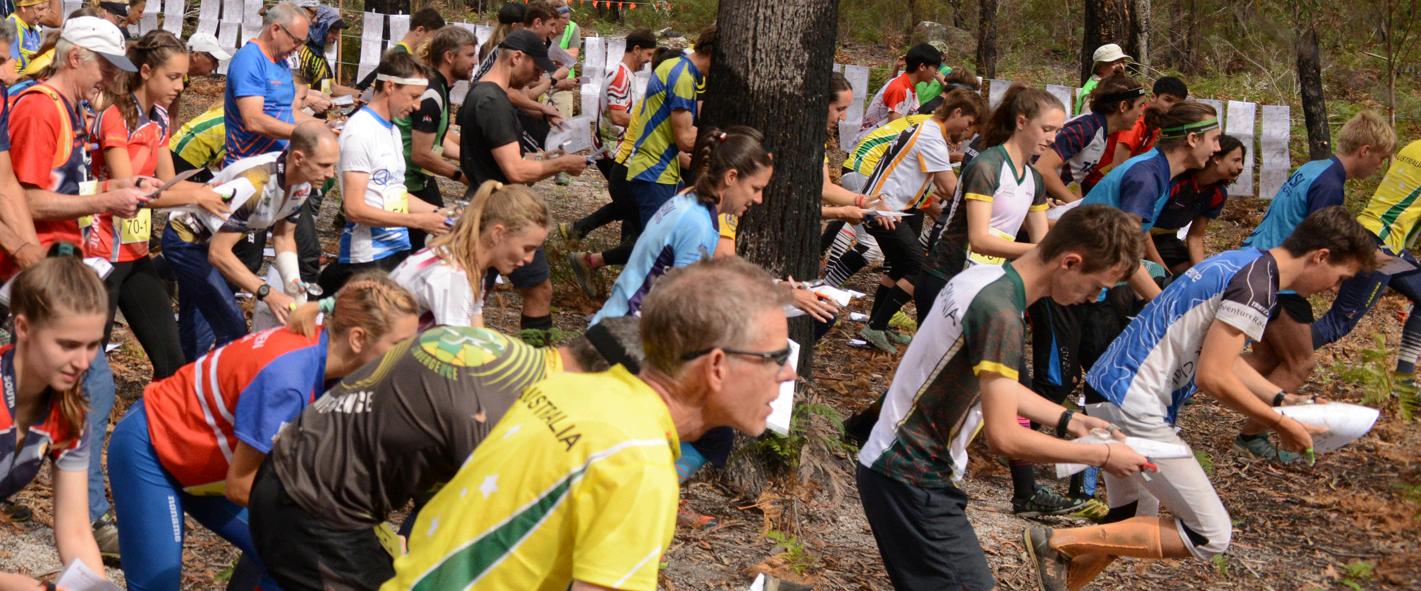
The Australian Sports Commission (ASC) develops, supports and invests in sport at all levels in Australia.
Orienteering Australia has worked closely with ASC to develop orienteering from community participation to high-level performance. Each year Orienteering Australia receivesfunding to support participation in orienteering across Australia.
One of the current orienteering initiatives using ASC funding includes KID-O. KID-O is in the process of becoming a national program! Bridget Uppill and Orienteering South Australia have created a wonderful program to introduce orienteering to 0-7 year olds. It is a structured program that introduces orienteering concepts to young children and helps develop their foundational movement skills. Bridget will work with OA to further improve KID-O, and coordinate the training of facilitators. Clubs will be supported to establish a KID-O program and the possibility of it becoming an Early Learning Centre and Sporting Schools Year 0-2 program will be explored.
We thank ASC for their ongoing support of orienteering in Australia.






MIKE DOWLING – CHAIR OA BOARD

Welcome to the 2025 orienteering year!
I am writing this column having just returned from the Oceania Championships 2025 in New Zealand, the championships were a fantastic set of events. I found getting back among the sand dune terrain that New Zealand is renowned for, was a great orienteering challenge as I imagine the many Australian orienteers who made the trip did so too. For our senior elite competitors at stake was a personal place at the World Championships 2025 in the long distance and middle distance formats. New Zealand’s Lizzie Ingham and Zefa Fa'avae made it a double to take those places. Congratulations to both. The home nation also proved too strong in the Australia New Zealand (ANZ) Challenge held as part of the championships. Our Australian competitors in the ANZ Challenge looked resplendent in the new competition tops for such teams. Thank you to our High Performance Management Group for getting this impressive-looking kit organised for our team. The championships was also the opening round of our 2025 National Orienteering League (NOL). Orienteering Australia extends a sincere thank you to Orienteering Wellington, the orienteering clubs of the lower North Island of New Zealand and Orienteering New Zealand for their fantastic work in putting on the event. On the home front we are gearing up for another great year of orienteering. The next round of our national league will be hosted by Orienteering Western Australia. The Board is supporting competitors from the eastern states to attend this round. The Board is examining ways to further support competitors to attend NOL rounds in general. From a national perspective we have our Australian Mountain Bike Orienteering Championships in Western Australia, the Australian 3 Days at Easter in Victoria, and the Australian Championships in Queensland this year. In addition, all our state/territory members and their affiliated clubs have a big program of events for all levels of competitive interest. Make the most of what is on offer to get your regular orienteering fix.

Proudly supported by

(forest2031)
From an Orienteering Australia perspective, this year will see the second year of implementation of our ‘whole of sport’ participation plan. Preliminary participation data has indicated that we are having some success in growing participation but there is a whole lot more to do. We must also adapt and be agile in how we present our sport as the demographic dynamic of Australian society continues to evolve. A major piece of work by the Board over the last 18 months has been to do a thorough review of our operational procedures to create Edition 6 of our Operations Guide. This is now very close to conclusion. In addition, the Board has been consulting with our members about important updates to the rules for the conduct of our Australian Schools Orienteering Championships (ASOC). Our ASOC Coordinator, Toni Brown, is reviewing this feedback for the Board to consider when it meets in March. ASOC is a most important part of our engagement and support of young people to participate in our sport. We are also very pleased that the fantastic Kid-O program for younger children developed by South Australia’s Bridget Uppill is now part of the Orienteering Australia participation development program. This wonderful program now sits alongside the Beginner Instruction for Everyone project to support first time participants and the Learn to Orienteer program to provide explicit instruction in skill development for our new sport participants.
A key task for the Board this year will be to engage our members to review and adapt our overarching strategy for our sport. Stakeholder consultation will begin in the first quarter of this year with a view to reviewing our overarching strategy for the next four year period by the time of our annual stakeholder workshops in November.
Do you have any thoughts or ideas for the future direction of our sport? Reach out to me at chair@orienteering.asn.au. The Board would love to hear your thoughts.
Round 1 24 - 27 January PALMERSTON NORTH, NZ sprint, middle, long
Round 2 8 - 9 March
Round 3 18 - 21 April
Round 4 10 -11 May
WA middle, sprint x 2, sprint relay
VALLEY, VIC (AUS 3 DAYS) sprint, middle, long, relay-distance
COAST, NSW middle, long
Round 5 28 September5 October BRISBANE, QLD NOL team-only final (Aus Champs), middle, long, sprint & relay
HANIA LADA
The Australian Orienteer’s graphic designer since 1997, Peter Cusworth, has officially retired. Thank you so much Peter for your high standard of work for many years, and spending 2024 preparing me for your retirement, which meant passing on your knowledge, tricks of the trade and templates. Peter will still be available to help out with problem solving, especially when the software we have been using does something unexpected, or weird but not wonderful.



After organising the Victorian MTBO Championships in April 2025 (see p37) on the weekend before the Australian 3 Days, Peter plans to spend more time in Europe competing at MTBO events. He was fourth a few times in M70 at the World Masters MTBO Championships (WMMTBOC) 2023 in Slovenia, and we will see what he can achieve in 2025, especially at WMMTBOC 2025 in Spain. We will have a report about the event in the June edition of the magazine.
Best of effort and luck Peter. We wish you and Carolyn good health, no mechanical issues, great weather and awesome courses.











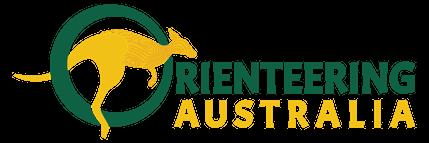
ORIENTEERING
Chair & Director – International (IOF)
PO Box 3379, North Strathfield, NSW 2137
MikeDowling
Director – Finance PaulLiggins
Director – Technical AnnaSheldon
Director – IOF Foot O Commissioner
Director Coaching & High Performance
BrettWeihart
ClareHawthorne
Director Media & Communications TroydeHaas
Director – Ex Officio, IOF Council Member BlairTrewin
Director AndreaHarris
Secretary RobertSpry
General Manager ÁrpádKocsik
Head Coach
High Performance Administrator, IOF Map Commissioner
Manager of Coach Development
Participation Manager
Manager of Coaching & Officiating Administration,
Manager of National Sporting Schools Program
Manager of National Awards
Chief Medical Officer
Editor of The Australian Orienteer
Manager of E-News Bulletin
Badge Scheme Secretary
Eventor Project Manager
National Integrity Manager, Complaint Manager
Manager of MTBO Development, IOF MTBO Commissioner
Communications & Marketing Manager
Ranking Officer (General)
Ranking Officer (Elite)
STATE ASSOCIATIONS
Orienteering Queensland: secretary@oq.asn.au
Orienteering NSW: secretary@onsw.asn.au
Orienteering ACT: office@act.orienteering.asn.au
NatashaKey
FredrikJohansson
BrodieNankervis
DanielStott
JimMackay
DavidHogg
MarkFreeman
Hania Lada
LindaBurridge
JohnOliver
PaulPrudhoe
AndrewShipton
CraigSteffens
LizLeung
DarrylErbacher
Bruce Arthur
Orienteering Victoria: secretary@vicorienteering.asn.au
Orienteering South Australia: secretary@sa.orienteering.asn.au
The national magazine of Orienteering Australia Inc. ABN 77 406 995 497
Published four times a year: 1 March, June, September, December. Copies are dispatched in bulk to state associations in the week prior to that date. Print Post Approved PP 236080/00011, (100023602 for NSW).
Editor, magazine design & assembly: Hania Lada, P.O. Box 200, Ringwood East, Victoria 3135
magazine@orienteering.asn.au Phone 0493 615 203
Printer: Razer Graphix, Factory 6/15 Stud Road, Bayswater. Contributions welcome! Prior consultation is suggested before preparing major contributions. Guidelines available from the editor and the website https://orienteering.asn.au/index.php/magazine/ Orienteering Australia website > magazine
Regular Contributors: David Hogg, Blair Trewin, Marina Iskhakova
Subscriptions: State Association members via State Associations. Contact relevant Association Secretary for details. Other subscribers: refer to the OA website https://orienteering.asn.au/index.php/magazine/ Orienteering Australia website > magazine, or contact the editor.
Opinions expressed in The Australian Orienteer are not necessarily those of Orienteering Australia.
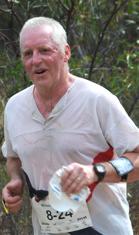



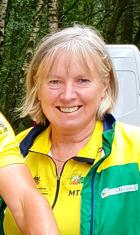




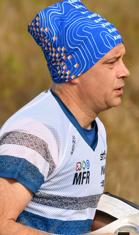



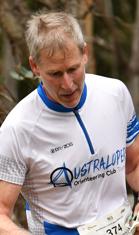



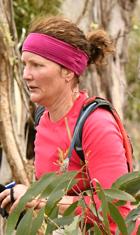





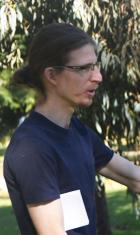

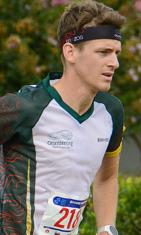

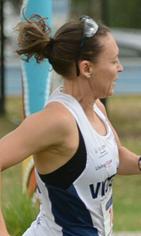

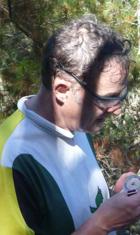











Orienteering Western Australia: oawa.secretary@gmail.com
Orienteering Tasmania: secretary@tasorienteering.asn.au
Top End Orienteers (Northern Territory): topendorienteersNT@gmail.com

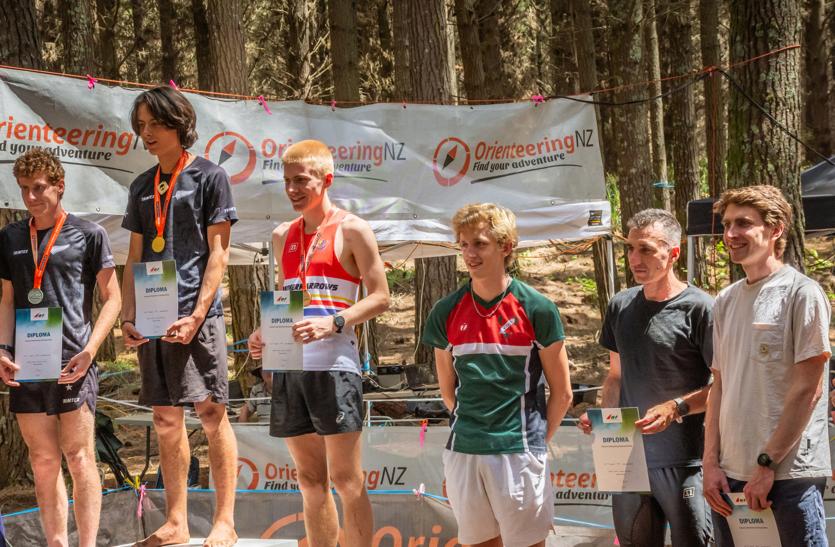

The Oceania Championships took place in the lower North Island of New Zealand in late January, the first time since 2017 that New Zealand has hosted the forest Oceania events. After a sprint at Massey University in Palmerston North, the three forest events were held in coastal pine forests on sand dunes west of Bulls, revisiting areas last seen by some Australians at the 1994 Asia-Pacific Championships. The event incorporated IOF Regional Championships in the senior and older junior grades, as well as the Australia-New Zealand Challenge across the full range of age groups.
The New Zealanders have always been challenging to beat on home terrain and 2025 was no exception, perhaps helped even more by the sandy ground being unusually soft in a dry summer (especially in the relay). After being heavily defeated in 2023 when they were only able to send a small contingent due to travel difficulties, New Zealand turned the tables comprehensively in 2025, winning across the three individual events 49-17 and then taking the relay 16 classes to 6.

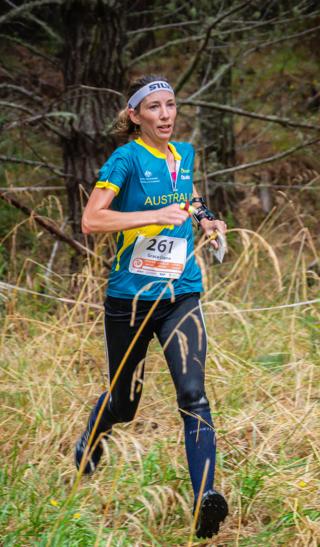

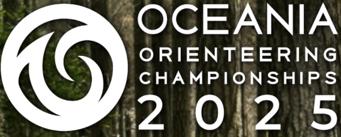

One of the major carrots on offer, as it had been at the sprint championships last year, was that of personal WOC places on offer for the winners of M21E and W21E in the two forest individual events. These went to New Zealanders at opposite ends of their elite careers. Lizzie Ingham’s sporting focus may have been partly elsewhere over the last few months – she was a member of the team who were runners-up in the top division of New Zealand’s national football league – but she demonstrated that she has not forgotten how to orienteer, taking out both forest individual titles and adding the sprint for good measure (only being course-setter for the relay stopped her from a shot at taking four gold medals). Her nearest Oceania rival was her young compatriot Kaia Joergensen, who was second Oceania runner in both forest races, while recent South Australian coach-in-residence Hanne Hilo, of Finland, got within 4 s of Ingham in the middle distance and was also second outright in the sprint. No Australians got close to titles, but Grace Crane was third Oceania in the sprint and middle, and after a challenging 2024 Emily Sorensen had
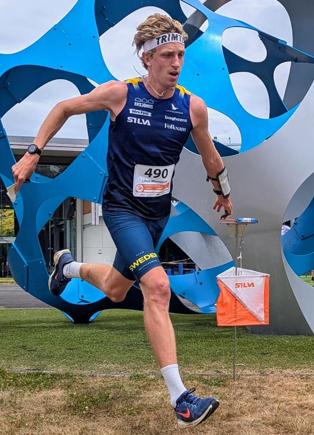

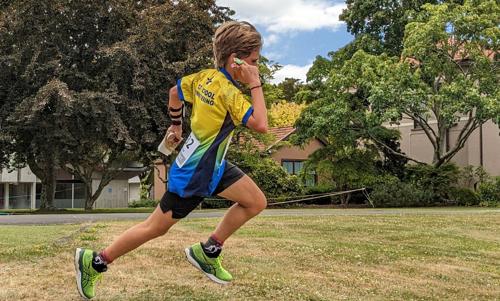
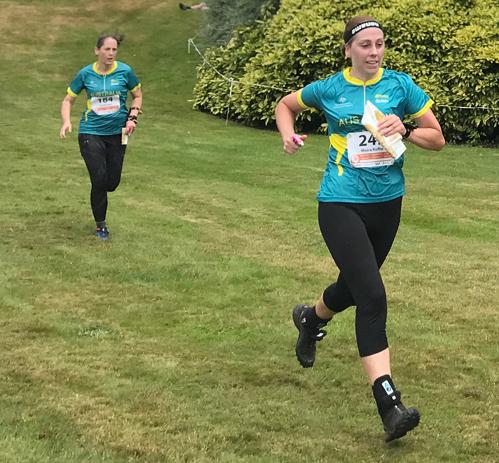

Winners of Oceania 2025 Sprint
Joshua Jones M14 NZ 12:43
Hayden Dent M16 AUS 14:03
Blake McKinnon M18 NZ 13:14
Robbie Rawles M35 NZ 15:38
Greg Flynn M40 NZ 13:37


Winners of Oceania 2025 Sprint
John Robertson M60 NZ 11:31
Martin Crosby M65 NZ 13:25
Ted van Geldermalsen M70 NZ 11:24
Massey Campus. Oceania O Champs 2025 Sprint map. Course 2 (M16, M18, M20A, M21A, M35, M40, W20E, W21E).
Winners of Oceania 2025 Sprint
Naomi Penton W14 AUS 13:46
Sophie Herde W16 NZ 12:52
Aoife Rothery W18 AUS 13:30


Winners of Oceania 2025 Sprint
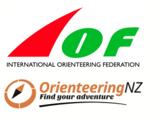

Jennifer Enderby W55 AUS 11:48
Paula Shingler W60 AUS 11:22
Carey Martin W65 NZ 14:27

Ricky Thackray M45 AUS 11:51
Bruce Arthur M50 AUS 11:54
Carsten Joergensen M55 NZ 11:15
Neil Kane M75 NZ 14:14
Ross Brighouse M80 NZ 16:39
John Robinson M85 NZ 20:12
Ian Holden M90 NZ 38:04
a good week, culminating in being the best Australian with a sixth in the long.
Zefa Fa’avae is making the step up to seniors after his JWOC silver medal last year, and did so with style, taking both of the forest titles. As with Ingham, this took the form of a very close middle – 3 s over Joseph Lynch – and a slightly more comfortable long with a minute and half in hand over another past JWOC medallist, Matt Ogden. In the absence of Tim Robertson, who did not make the trip, WOC seventhplacegetter Lynch was a clear favourite for the sprint and performed accordingly, with 31 s in hand over Ogden. A pair of South Australians produced the best Australian performances. After a sprint mispunch, Leith Soden continued the strong progress of his early senior career, taking bronze in the middle and being best Australian with sixth in the long, while Angus Haines took bronze in sprint, closely followed by Callum White in fourth.
Australians did have success in some of the IOF junior grades. In M16 all three individual titles on offer went back west
Zara Toes W18 NZ 13:30
Katie Symons W40 NZ 12:40
Rachel West W45 AUS 13:07
Yvette Baker W50 NZ 12:52
Gillian Ingham W70 NZ 13:17
Kate Fortune W75 NZ 22:11
Trish Faulkner W80 NZ 15:20
Valerie Robinson W85 NZ 25:53
across the Tasman, with Hayden Dent winning the sprint and long, and Alton Freeman the middle. W20 was also a relatively successful class, with Nea Shingler taking sprint gold and two forest bronzes, and Milla Key first Oceania and second outright in the long. Elye Dent won the M18 middle, and Aoife Rothery dead-heated for first in W18, while Oliver Bishop took a pair of silvers in M18, and Izzy Greenhalgh had her first significant major championship result with silver in the W16 long.
There were also numerous Australian successes in younger junior and masters grades, despite the heavy defeat in the overall Challenge. Rui Bluett-Jones in W10 was the only Australian to win all three individual races, but four orienteers won both the individual forest races; Eoin Rothery (M65), Geoff Lawford (M70), Martina Craig (W55) and Jenny Hawkins (W80). There was an Australian sweep of the medals in all three W60 races; Paula Shingler won the long and sprint and Sue Hancock the middle, with Su Yan Tay also a medallist in all events. Naomi Penton also had an excellent week in W14 with two wins and a second.


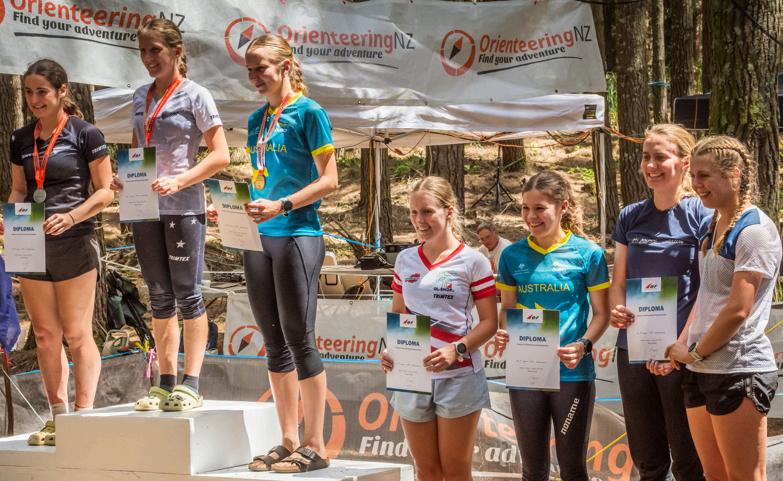
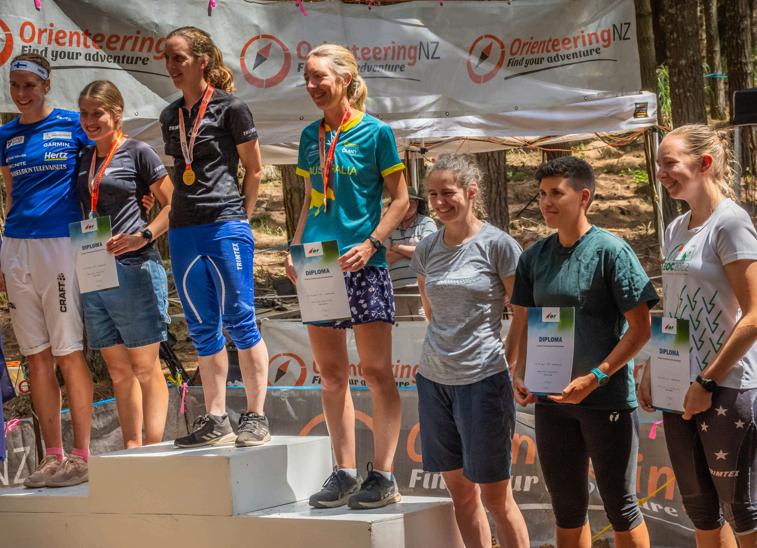

Results of Oceania Championships for individual senior and junior elite classes.
M20E – Sprint 3.8 km 1
M20E – Long 12.3 km
1 Jakob Knoef NZ 1:14:49
2 Jake McLellan NZ 1:15:28
3 Eddie Swain NZ 1:20:44
4 Owen Radajewski AUS 1:20:57
5 Marcus Brennan NZ 1:22:49
6 Sam Carryer NZ 1:23:37
Brackets indicate placings of Oceania athletes when non-Oceania athletes placed in the top six.
M21E – Sprint 3.8 km
1 Joseph Lynch NZ 13:52
2 Matt Ogden NZ 14:23
3 Angus Haines AUS 14:56
4 Callum White AUS 14:58
5 Nathan Borton NZ 15:15
6 Linus Wernström SWE 15:17
7 Patrick Jaffe (6) AUS 15:33
M21E – Middle 6.0 km
1 Zefa Fa'avae NZ 30:46
2 Joseph Lynch NZ 30:49
3 Leith Soden AUS 32:25
4 Linus Wernström SWE 32:51
5 Matt Ogden (4) NZ 32:53
6 Patrick Jaffe (5) AUS 33:26
7 Angus Haines (6) AUS 34:48
M21E – Long 15.3 km
1 Zefa Fa'avae NZ 1:24:24
2 Matt Ogden NZ 1:25:54
3 Joseph Lynch NZ 1:27:03
4 Felix Hunt NZ 1:27:54
5 Nick Hann NZ 1:32:10 6 Leith Soden AUS 1:32:26
Oceania Championships senior & junior elite relay results
W21 – Oceania 2025 Relay
1 Kaia Joergensen, Renee Beveridge, Lara Molloy (all NZ) 2:14:50
2 Zara Stewart, Imogene Scott, Briana Steven (all NZ) 2:32:22
3 Siri Suter (SUI), Filippa Braun (SWE), Amber Riddle (NZ) 2:37:48
4 Grace Crane, Emily Sorensen, Aislinn Prendergast (all AUS) 2:40:12
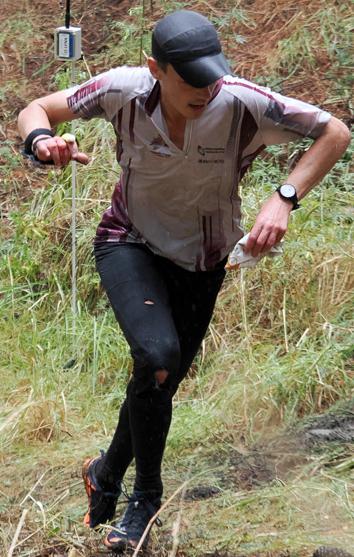



W20E – Sprint 3.0 km
1 Nea Shingler AUS 14:28
2 Milla Key AUS 14:39
3 Anna Babington NZ 14:56
4 Filippa Braun SWE 15:01
5 Katherine Babington (4) NZ 15:05
6 Rachel Baker (5) NZ 15:17
7 Georgia Lindroos (6) NZ 15:34
W20E – Middle 4.9 km
1 Katherine Babington NZ 36:11
2 Rachel Baker NZ 38:08
3 Nea Shingler AUS 38:43
4 Anna Babington NZ 39:59
5 Milla Key AUS 40:36
6 Filippa Braun SWE 41:27
7 Phoebe Hunt (6) NZ 42:55
W20E – Long 7.6 km
1 Filippa Braun SWE 58:55
2 Milla Key (1) AUS 1:01:40
3 Nea Shingler (2) AUS 1:05:39
4 Tide Fa'avae (3) NZ 1:05:54
5 Phoebe Hunt (4) NZ 1:07:03
6 Erika Enderby (5) AUS 1:10:43
7 Liana Stubbs (6) AUS 1:16:46
W21E – Sprint 3.0 km
1 Lizzie Ingham NZ 13:30
2 Hanne Hilo FIN 13:59
3 Kaia Joergensen (2) NZ 14:14
4 Sabine Hauswirth SUI 14:46
5 Siri Suter SUI 14:48
6 Grace Crane (3) AUS 14:58
7 Emily Sorensen (4) AUS 15:15
8 Briana Steven (5) NZ 15:32
8 Zara Stewart (5) NZ 15:32 W21E – Middle 3.0 km 1 Lizzie Ingham NZ 34:09 2 Hanne Hilo FIN 34:13 3 Kaia Joergensen (2) NZ 34:52 4 Sabine Hauswirth SUI 36:27
5 Grace Crane (3) AUS 37:20
6 Renee Beveridge (4) NZ 38:39
6 Briana Steven (4) NZ 38:39
8 Caitlin Young (6) AUS 40:12
M21 – Oceania 2025 Relay
1 Zefa Fa'avae, Matt Ogden, Joseph Lynch (all NZ) 2:05:52
2 Will Tidswell, Scott Smith, Nick Hann (all NZ) 2:13:08
3 Matt Doyle, Brodie Nankervis, David Stocks, Brodie Nankervis (all AUS) 2:13:54
W20 – Oceania 2025 Relay
1 Rachel Baker, Phoebe Hunt, Tide Fa'avae (all NZ) 1:44:24
2 Anna Babington, Morag McLellan, Katherine Babington (all NZ) 2:01:54
3 Nea Shingler, Milla Key, Erika Enderby (all AUS) 2:04:40
(6) AUS 1:23:54
M20 – Oceania 2025 Relay
1 Riley Croxford, Jake McLellan, Felix Hunt (all NZ) 1:44:45
2 Jakob Knoef, Sam Carryer, Eddie Swain (all NZ) 2:07:31
3 Nicholas Green, James Wright, Matthew Greenwood (all NZ) 2:21:24
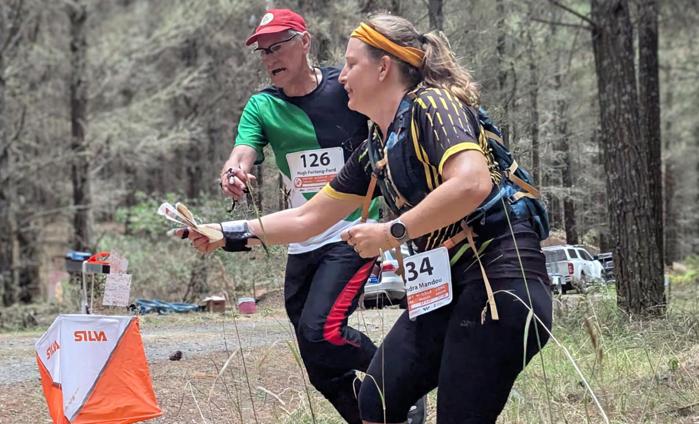
Oceania O Champs 2025
Middle Distance map. Course 2 (M35A, M40A, W20E, W21E).

& Alexandra
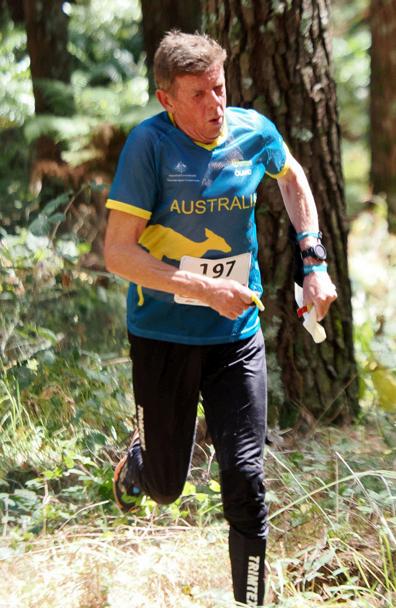
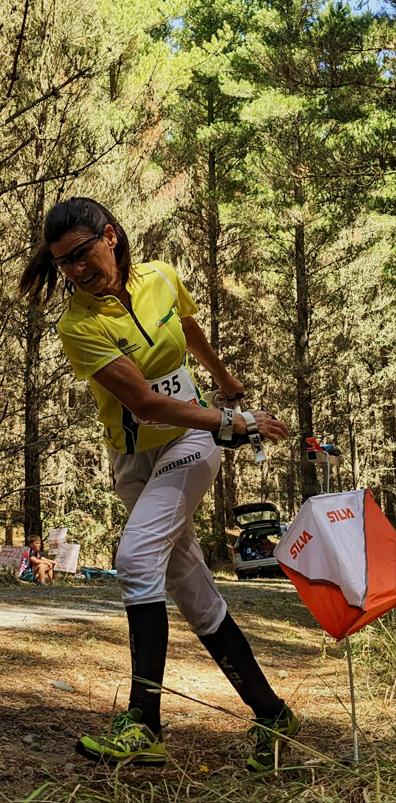

Winners of Oceania 2025 Middle
Hugo Skerman M14 NZ 20:34
Alton Freeman M16 AUS 24:37
Winners
John Robertson M60 NZ 24:41
Winners of Oceania 2025 Middle
Naomi Penton W14 AUS 24:12
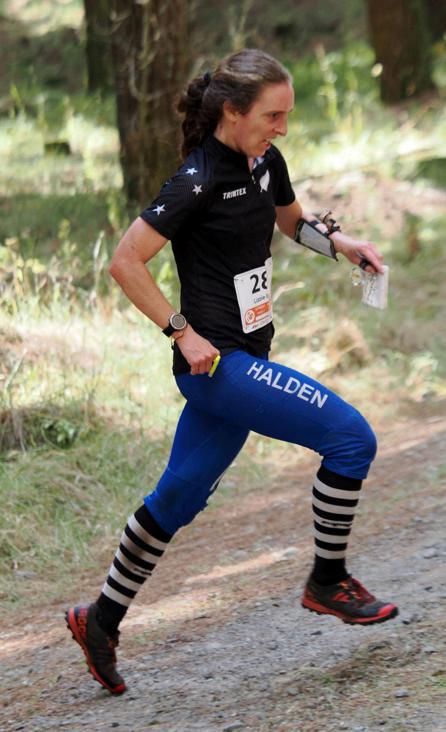



Elye Dent M18 AUS 34:21
Tom Higgins M35 NZ 42:30
Tane Cambridge M40 NZ 33:01
Aaron Prince M45 NZ 28:00
Grant Bluett M50 AUS 29:25
Bill Edwards M55 NZ 24:22
Eoin Rothery M65 AUS 25:44 Geoff Lawford M70 AUS 23:17 Adrian Uppill M75 AUS 21:30 Ross Brighouse M80 NZ 13:53
John Hodsdon M85 AUS 26:13
Holden M90 NZ 29:38
Anna Wright W16 NZ 26:37
Amy Nicoll W18 NZ 30:49
Tessa Ramsden W35 NZ 40:17
Katie Symons W40 NZ 30:36
Sara Prince W45 NZ 28:07
Yvette Baker W50 NZ 28:44


Winners of Oceania 2025 Middle
Martina Craig W55 AUS 24:13

Sue Hancock W60 AUS 27:12
Liz Nicholson W65 NZ 23:40
Gillian Ingham W70 NZ 22:25
Patricia Aspin W75 NZ 20:47
Jenny Hawkins W80 AUS 20:59
Valerie Robinson W85 NZ 52:04








Winners of Oceania 2025 Long
Euan Shedden M14 AUS 35:59
Hayden Dent M16 AUS 58:12
Blake McKinnon M18 NZ 1:02:54
James Watson M35 NZ 1:24:33
Tane Cambridge M40 NZ 1:03:26
Aaron Prince M45 NZ 49:53
Darren Ashmore M50 NZ 52:19
Knottingly. Oceania O Champs 2025 Long Distance map. Course 10 (M55AS, M75A, W40AS, W65A, W70A).

Winners of Oceania 2025 Long
Jonathon McComb M55 AUS 50:49
Greg Barbour M60 NZ 49:24
Eoin Rothery M65 AUS 52:38
Geoff Lawford M70 AUS 54:05
Rob Garden M75 NZ 49:48
Ross Brighouse M80 NZ 26:21
Ian Holden M90 NZ 1:27:33
Winners of Oceania 2025 Long
Christina Symons W14 NZ 36:47
Anna Wright W16 NZ 53:23
Zara Toes W18 NZ 52:35
Tessa Ramsden W35 NZ 1:23:08
Katie Symons W40 NZ 1:10:50
Sara Prince W45 NZ 57:35
Antonia Wood W50 NZ 56:13
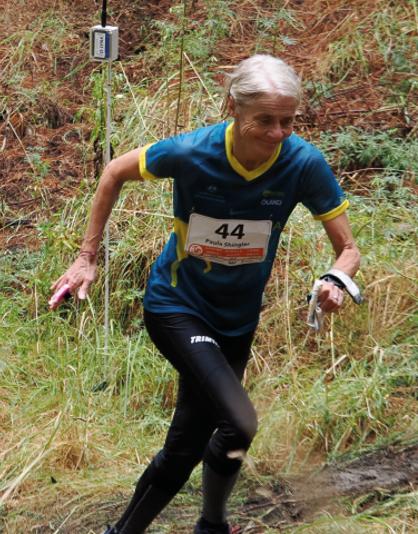
Winners of Oceania 2025 Long
Martina Craig W55 AUS 54:00
Paula Shingler W60 AUS 55:03
Carey Martin W65 NZ 47:22
Gillian Ingham W70 NZ 45:09
Jill Dalton W75 NZ 43:42
Jenny Hawkins W80 AUS 48:00
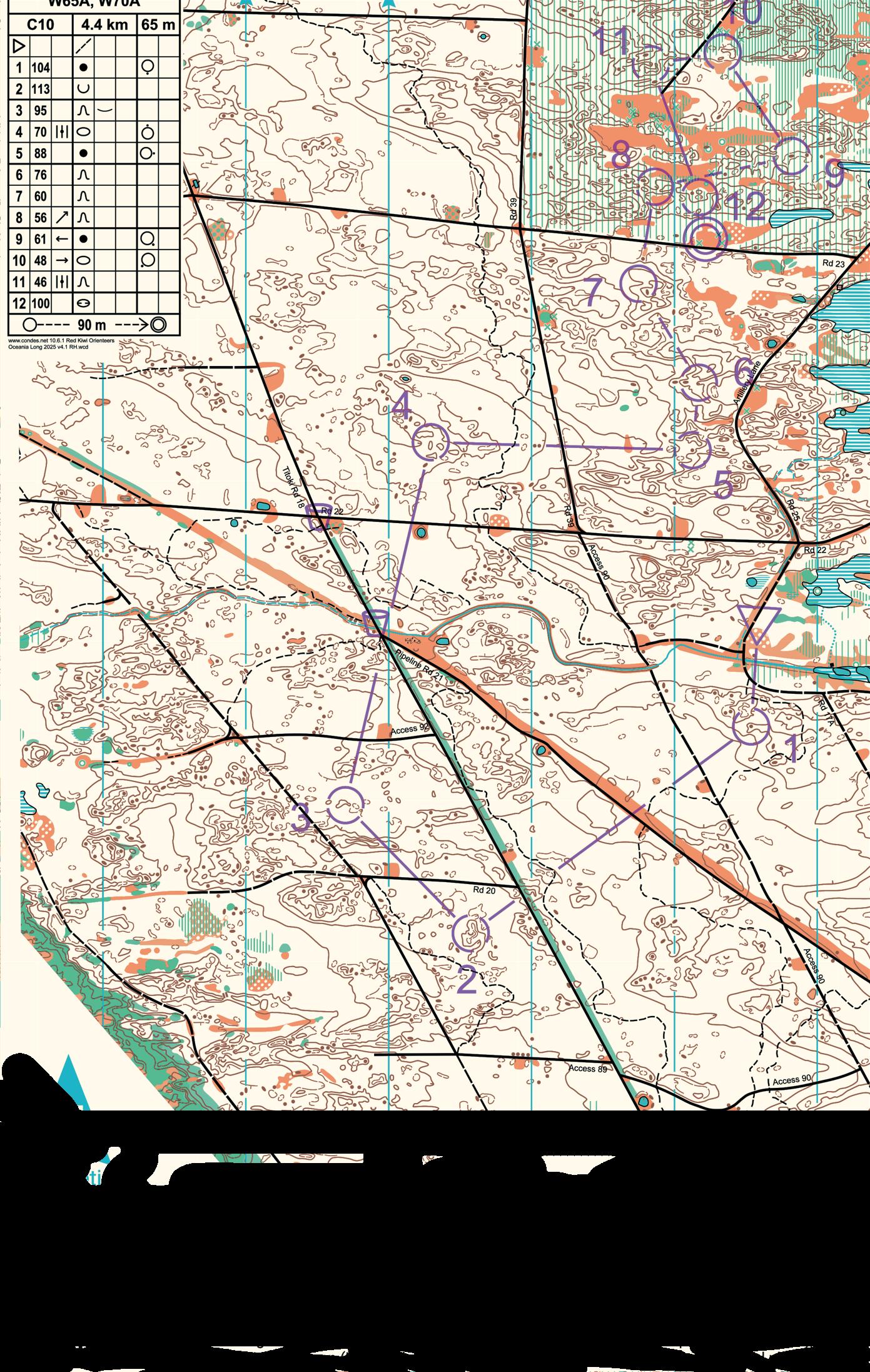
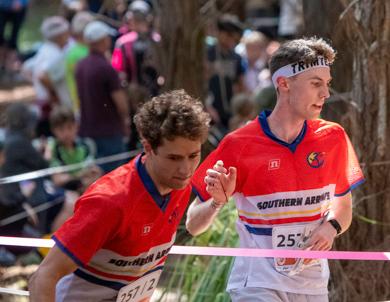

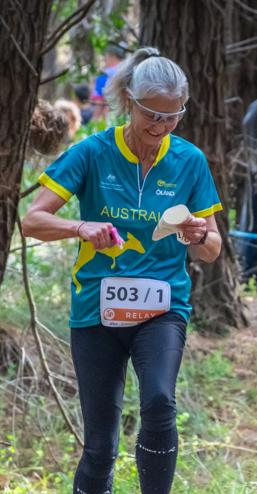



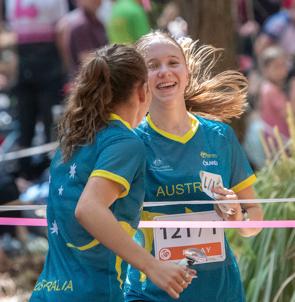

Both sides of the map, variant AAACCAAB. One of 49 variants of M21 course at Oceania Orienteering Championships 2025 Relays.
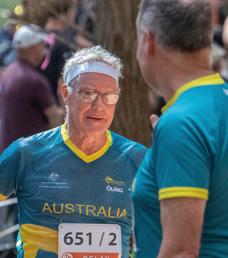


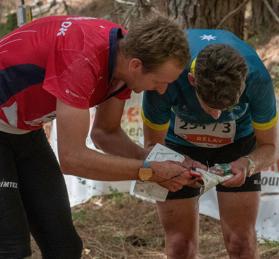

Mass start.1

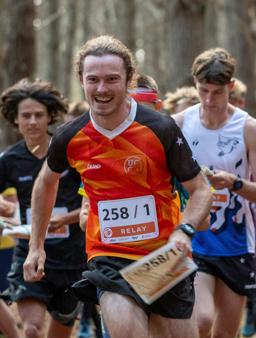





First - Oceania 2025 Relay
M14 Naomi Penton, Angus Hewitt, Alma Walter AUS 1:27:41
M16 Zack Meads, Joshua Jones, Tahi Harris NZ 1:47:25
M18 Solomon Randerson, Reuben Adye, Oscar Burns AUS/NZ 2:35:17
M35 Tane Cambridge, Bryn Davies, Greg Flynn NZ 2:24:53
M45 Rob Walter, Ricky Thackray, Simon Rouse AUS 1:42:35
M55 Rolf Boswell, Bill Edwards, Carsten Joergensen NZ 1:34:49
M65 Eoin Rothery, Neil Barr, Grant McDonald AUS 1:20:57
M75 Rob Garden, Michael Wood, Neil Kane NZ 1:17:06
New Zealand also had the best of the relays on the final day. The W21E title was never in doubt despite the absence of Ingham, with the combination of Kaia Joergensen, Renee Beveridge and Lara Molloy taking an easy victory. Australia made a good start in M21E with Matt Doyle coming in a minute ahead of Fa’avae, and were still in it after two legs, but in the end New Zealand were too good with Ogden and Lynch running the two fastest times of the day on the last two legs. New Zealand also swept the junior grades, with Australian successes coming in the masters events. Australian teams took the top three places in M45, with the M45 and M50 Challenge teams separated by an ACT M45 team, while there
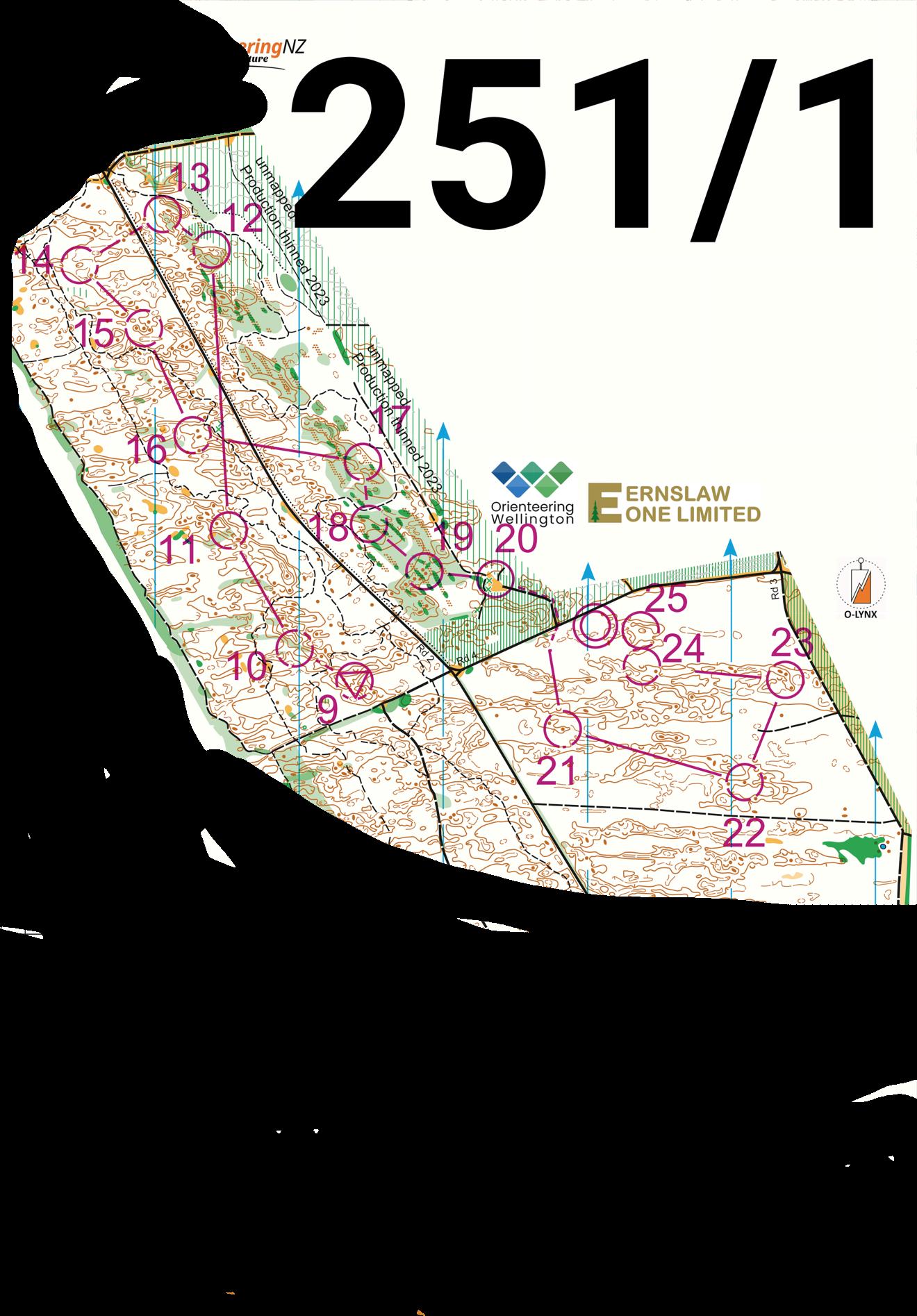




First - Oceania 2025 Relay


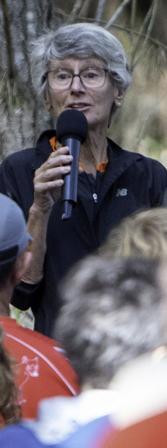

W16 Sophie Herde, Anna Wright, Greta Prince NZ 1:53:54
W18 Niamh Hoare, Lani Murray, Zara Toes NZ 2:09:20
W35 Claire Flynn, Katie Symons, Piret Klade NZ/EST 2:09:49
W45 Antonia Wood, Christina Freeman, Yvette Baker NZ 2:01:36
W55 Marquita Gelderman, Katie Hill, Jenni Adams NZ 1:18:48
W65 Sue Key, Jenny Bourne, Louise Fairfax AUS 1:26:05
W75 Jenny Hawkins, Val Hodsdon, Janet Tarr AUS 2:21:01
There will be two events in 2026, the sprint championships on the Central Coast in late January, followed by the forest events based in Canberra at the end of September.
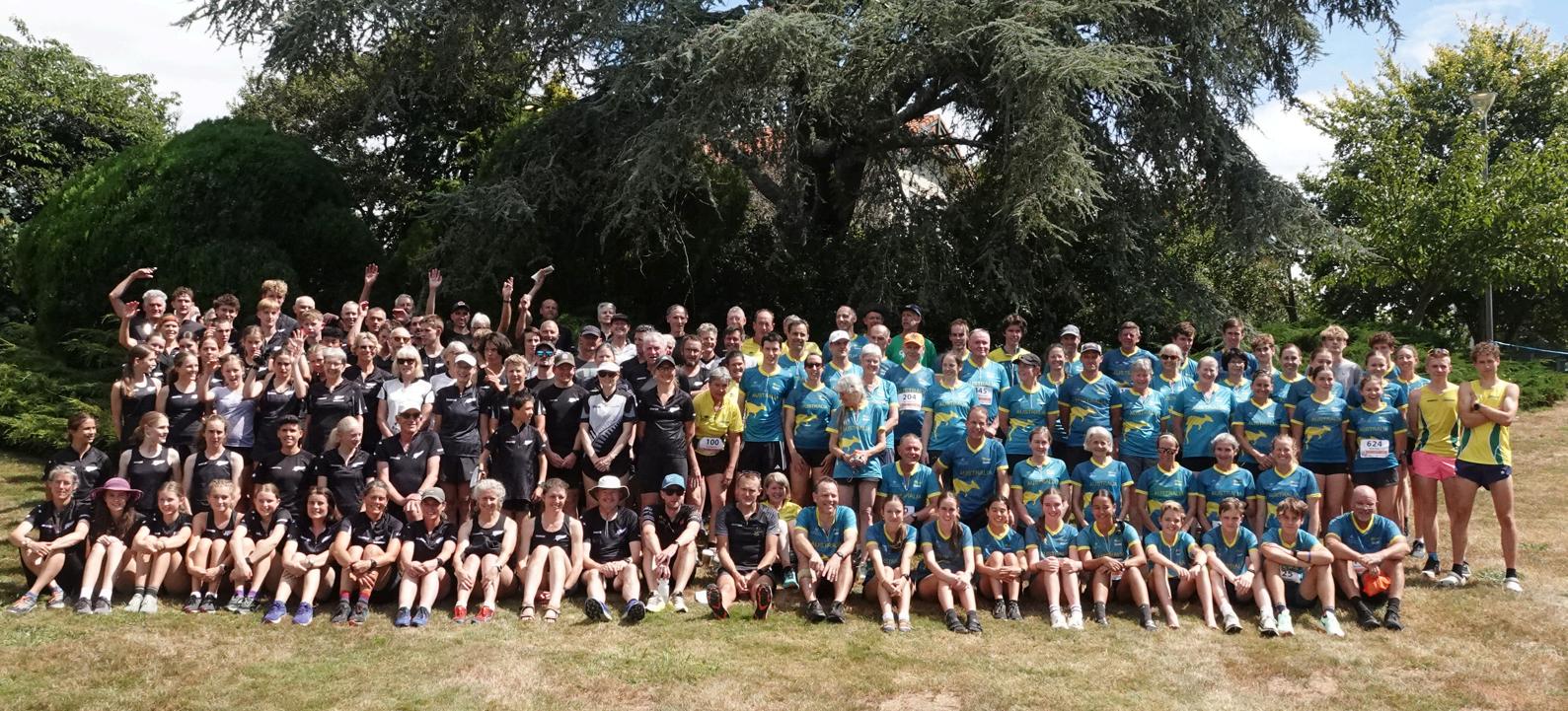

M50 Bruce Arthur Craig Dufty 11:54 13:06 25:00 1
13:07 26:09
W50 Melissa Joseph Jenny Casanova 14:28 15:10 29:38 Yvette Baker Antonia Wood 12:52 13:55 26:47 1
M55 Richard Morris Eric
W55
M60
W60
W65
M70


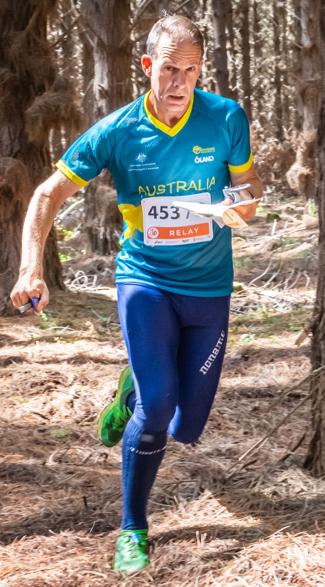
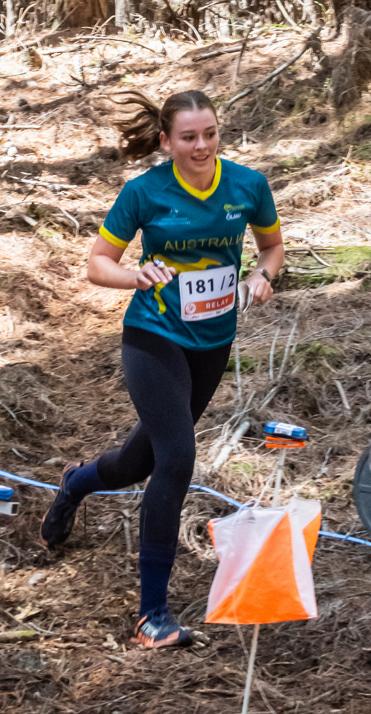

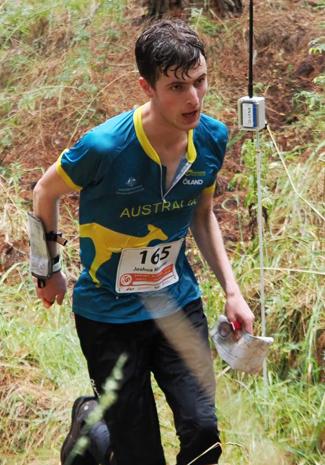


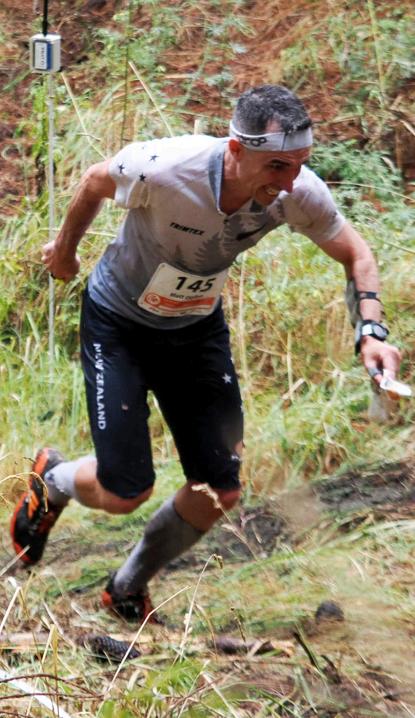

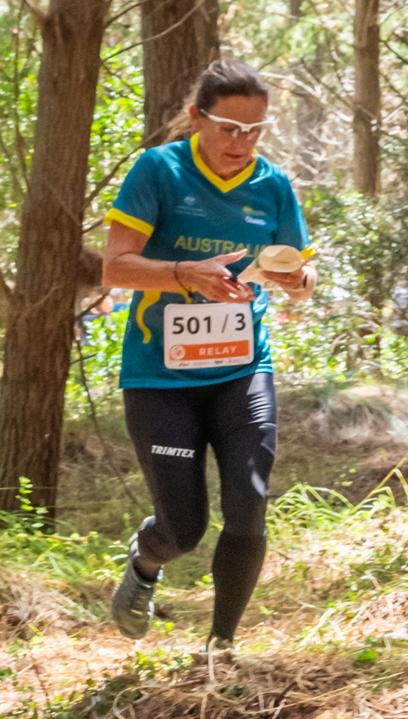

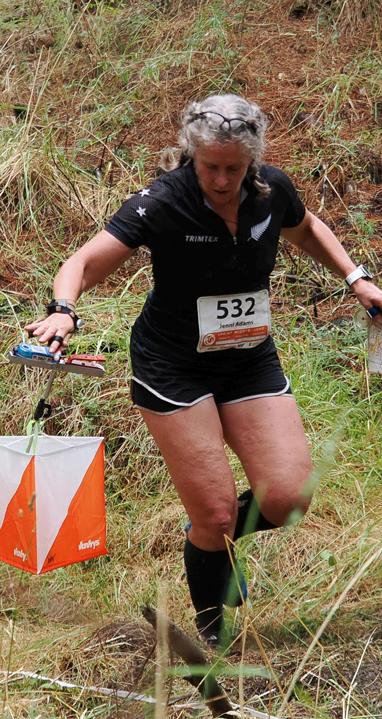


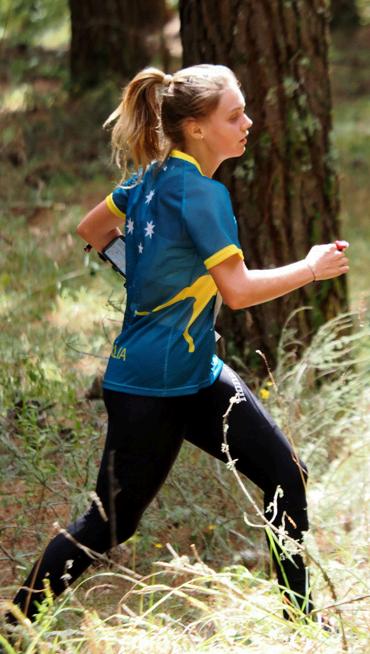


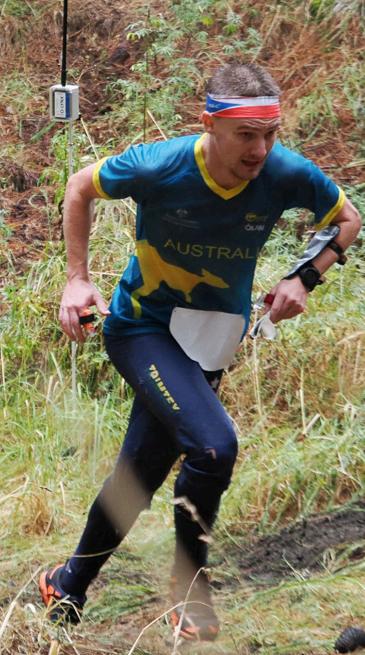

M16
W16
M18
M20
W20
W21
M40
W40



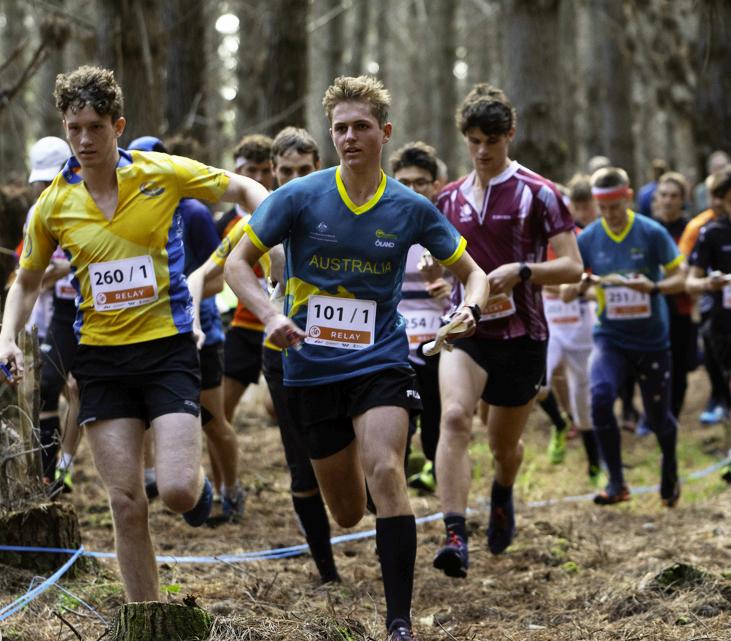
The Oceania Championships individual events were also the first three rounds of the National Orienteering League for 2025. With not everyone making the trip across the Tasman, it was a test of depth, and showed some changes are likely from 2024.
The Canberra Cockatoos senior women, led by Grace Crane who was second National League runner in each race, have made the first step towards defending their title. The NSW Stingers will have some work to do to catch the early senior men’s leaders though, they sit eight points behind joint leaders the Southern Arrows and Victorian Vikings. The Arrows have been given a boost by the continued development of Leith Soden, leading National League runner
COURTESY OF SWISS ORIENTEERING MAGAZINE 06-2024, TRANSLATED BY SUSI STRASSER
Norway's endurance athletes such as Kristian Blummenfelt or Jakob Ingebrigtsen dominate their sport. A secret of their success is the ‘double threshold’ training principle. This training method, developed by Norwegian sports scientists around the former top runner Marius Bakken, focusses on improving the anaerobic threshold to increase endurance performance.
One factor of this success is the extensive threshold training. In a report by Marius Bakken (2023) the training methodology is presented in detail. The principle is simple: high scopes and twice a week two units of threshold training on the same day, for example on Wednesday 3 × 10 min in the morning, and 4 × 8 min in the afternoon. On Saturday follow 3 × 12 min or 8 min. The big advantage is that a rapid recovery between the units as well as less fatigue than with highly intensive units makes a larger volume in the specific tempo range possible. One of the disadvantages is the constant pricking of the fingers, which is necessary in a professional environment to


Proudly supported by

in both forest races, and may be a chance of their first title if their lead runners can put together a full season.
In 2024 the Stingers swept every race in both junior grades. The junior women made an equally good start this year, but the men face stiffer competition, with some of their best performers in 2024 graduating to the senior ranks. Four points currently separate the Tassie Foresters, the Cockatoos and the Stingers.
Grace Crane leads the women’s individual competition from Emily Sorensen, while Angus Haines and Patrick Jaffe are tied in the men’s. Nea Shingler and Milla Key are fighting out the junior women’s, while Euan Best and Owen Radajewski are tied in the junior men’s.
test the lactate in the blood during training and thus ensure that the body is working with exactly the right intensity.
The ‘Norwegian threshold’ is defined as the intensity between the 'aerobic threshold’ and the ‘anaerobic threshold’. ‘Aerobic threshold’: This is the point at which the body switches from aerobic metabolism to a mixture of aerobic and anaerobic metabolism, and slowly breaks down lactate due to the increased intensity. In most athletes, this occurs at a lactate level of about 2 mmol or 80% of the maximum heart rate. ‘Anaerobic threshold’: This is the time at which the body begins to continuously produce lactate. Directly below is the intensity, which can be maintained for about an hour, or even longer for well-trained endurance athletes. For most, this point occurs at about 4 mmol or 87% of the maximum heart rate. The numbers can vary considerably from person to person.
More information
References


Marius Bakken (2023). The Norwegian model of lactate threshold training and lactate controlled approach to training. https://www. mariusbakken.com/the-norwegian-model.html

IMAGES FROM THE ORGANISERS OF THAI INTERNATIONAL ORIENTEERING CHAMPIONSHIPS (TIOC) UNLESS STATED OTHERWISE.

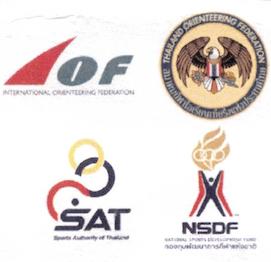


WINNERS OF SPRINT
Class Name Team
M21 Honjo Yuichi JPN
W21 Chu Ying Yau HKG
M20 Takebayashi Hiroki JPN
W20 Ota Kiwa JPN
M18 Woo Alok HKG
W18 Yau Man Hei Meri HKG
M16 Wong Keng Kiu HKG
W16 Zhang Shenyuan CHN
WINNERS OF MIDDLE
Class Name Team
M21 Ito Itsuki JPN
W21 Assem Nazyrova KAZ
M20 Saito Taiki JPN
W20 Suzuki Mayu JPN
M18 Okubo Yuma JPN
W18 Ono Chisako JPN
M16 Miyawaki Hironao JPN
W16 Zhang Shenyuan CHN
Supporting orienteering in Asia and Oceania is one way to grow the sport.Taking part in these regional events keeps up the participant numbers and makes the events more profitable, which incentivises organisers to organise more events.
WINNERS OF RELAY
Class Names Team
M21 Honjo Yuichi, Komaki Hiroki, Ito Itsuki JPN
W21 Lam Cho Yu, Chan Hau Wah Brenda, Chu Ying Yau HKG
M20 Saito Taki, Ishihara Hiroki, Kajimoto Yamato JPN
W20 Maki Iruka, Suzuki Mayu, Onozuka Tomomi JPN
M18 Sato Yin, Kamijukkoku, Okubo Yuma JPN
W18 Yamamoto Eri, Ochiai Mina, Ono Chisako JPN
M16 Sumikawa Yuki, Kosaka Koki, Miyawaki Hironao JPN
W16 Xian Meilun, Lian Yi, Zhang Shenyuan CHN
The Asian Junior and Youth Orienteering Championships 2025 will be between 26 and 31 August in Shitara, Japan, and Hong Kong is organising a two-day event over Christmas 2025.



Why do we go orienteering?
ANDREW HILL
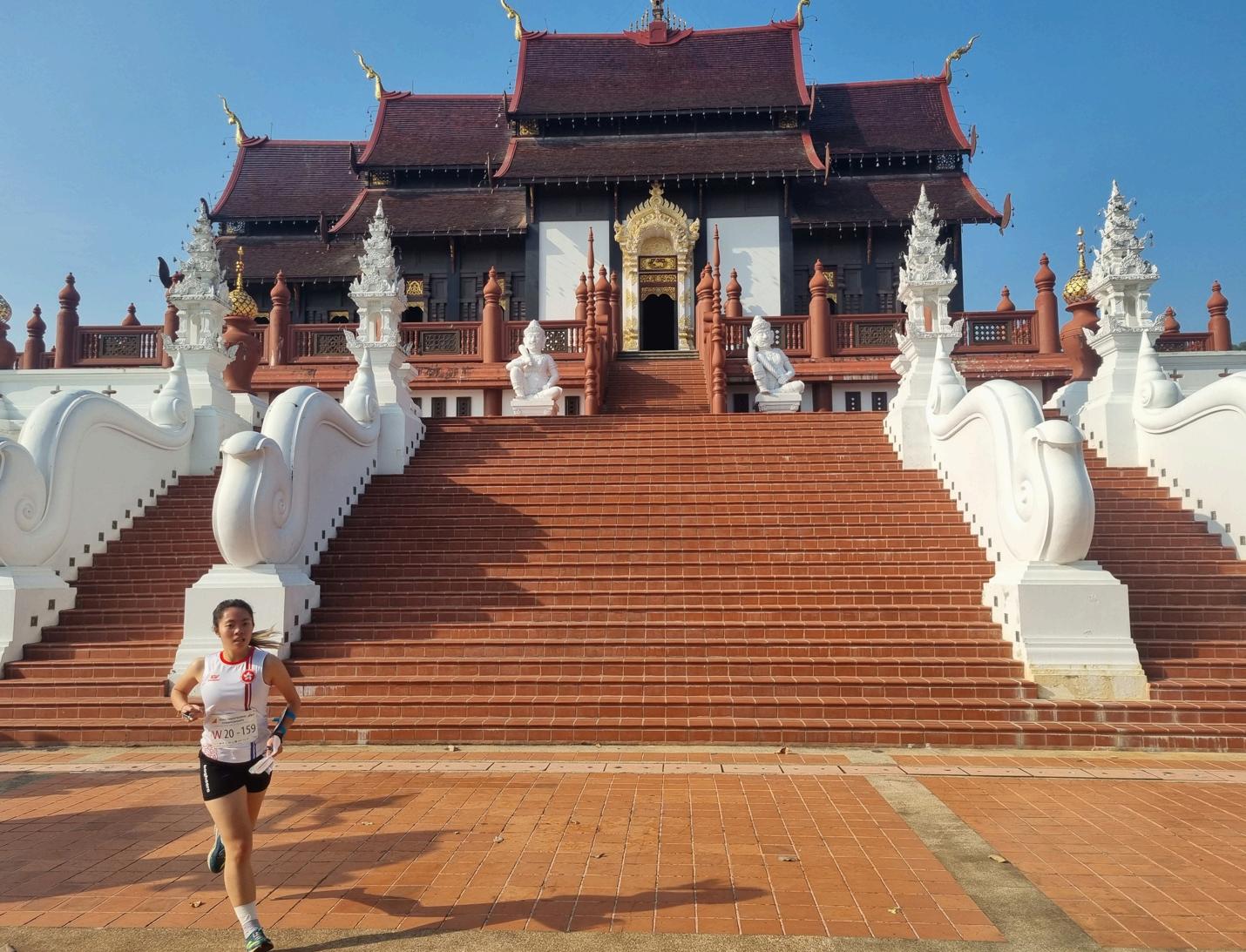
OFor some it’s the exercise or getting out in nature, visiting new places, the competition, or the social aspect.

ver the Christmas holidays I was fortunate enough to run in the Thailand International Orienteering Championships in Chiang Mai in far north Thailand. This was held in conjunction with the Asian Orienteering Championships for those that were not part of Asia or didn’t make their respective Asian teams. Whilst it was winter over there, the weather wasn’t too different from the summer heat in Australia, so it was quite hot.The events were well organised with everything running precisely to schedule from what time the bus left the hotel, to the ceremonies, and meals were provided before returning home.There was an abundance of volunteers all doing their part to ensure a pleasant experience.


The first event was a sprint around Royal Park Rajapruek, which was very complex with a lot of intricate detail. It was quite hard to get some good control flow but a unique experience to be in the surrounds of the large temple, and controls were hidden amongst
the shrines and manicured gardens.The second and third events were at Nam Bo Luang, a reasonably open forest, with some erosion-gully detail around the creeks, not too dissimilar to some areas of Australia.
So to answer the original question. Everyone has their personal reasons, but I go orienteering to experience all of the above but mostly get a thrill around visiting new places such as visiting all the hidden pockets of bushland in the Sydney Summer Series, but in this case, new orienteering maps in a foreign country.
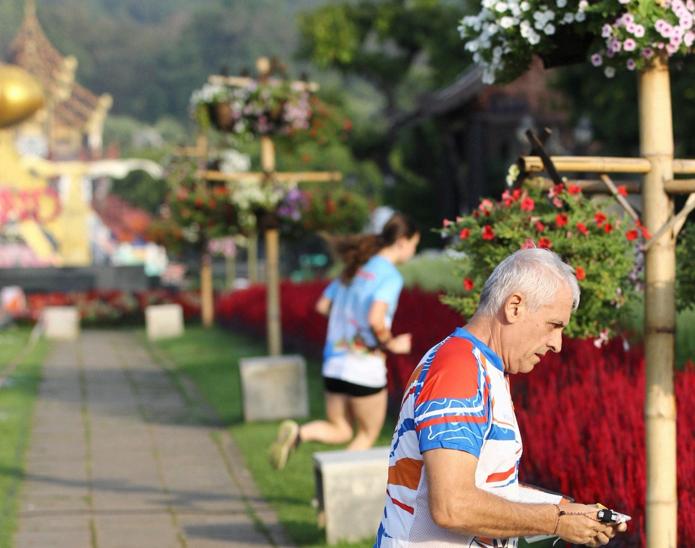
Asian Orienteering Championships 2024 and Thai International Orienteering Championships 2024, M21 middle course.
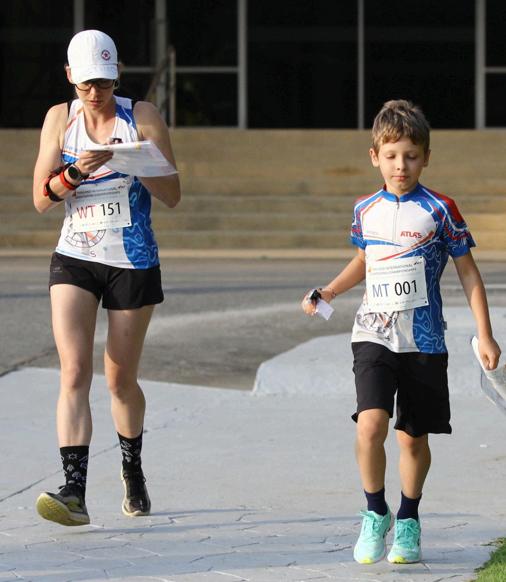
Competitors at Thai International Orienteering Championships 2024.

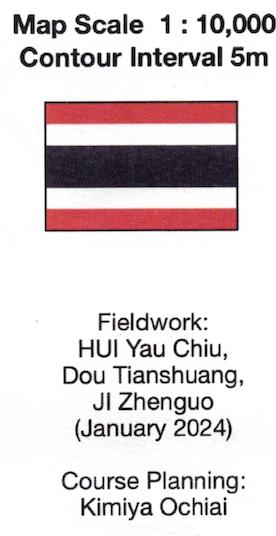
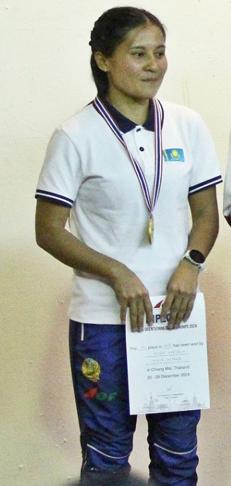


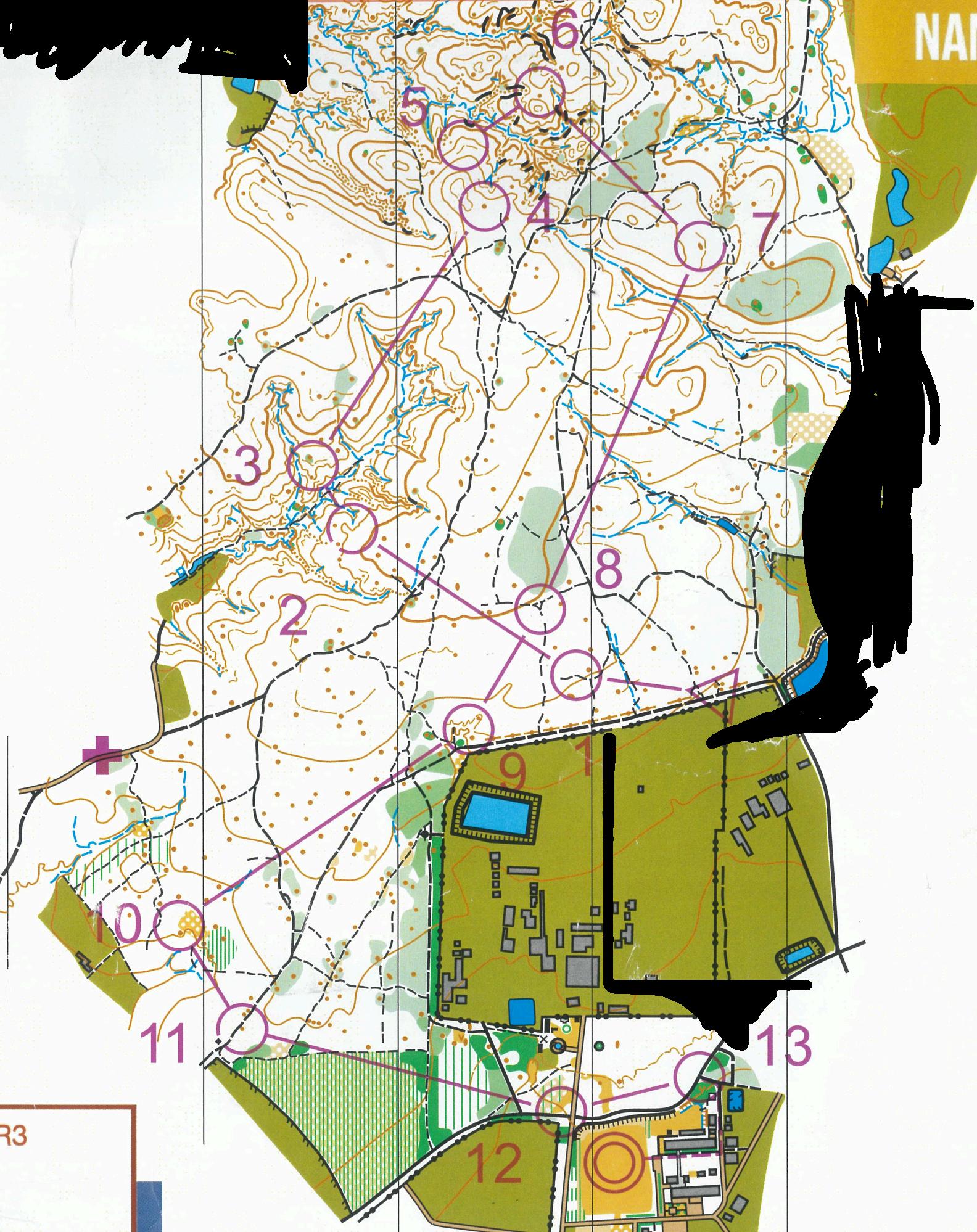
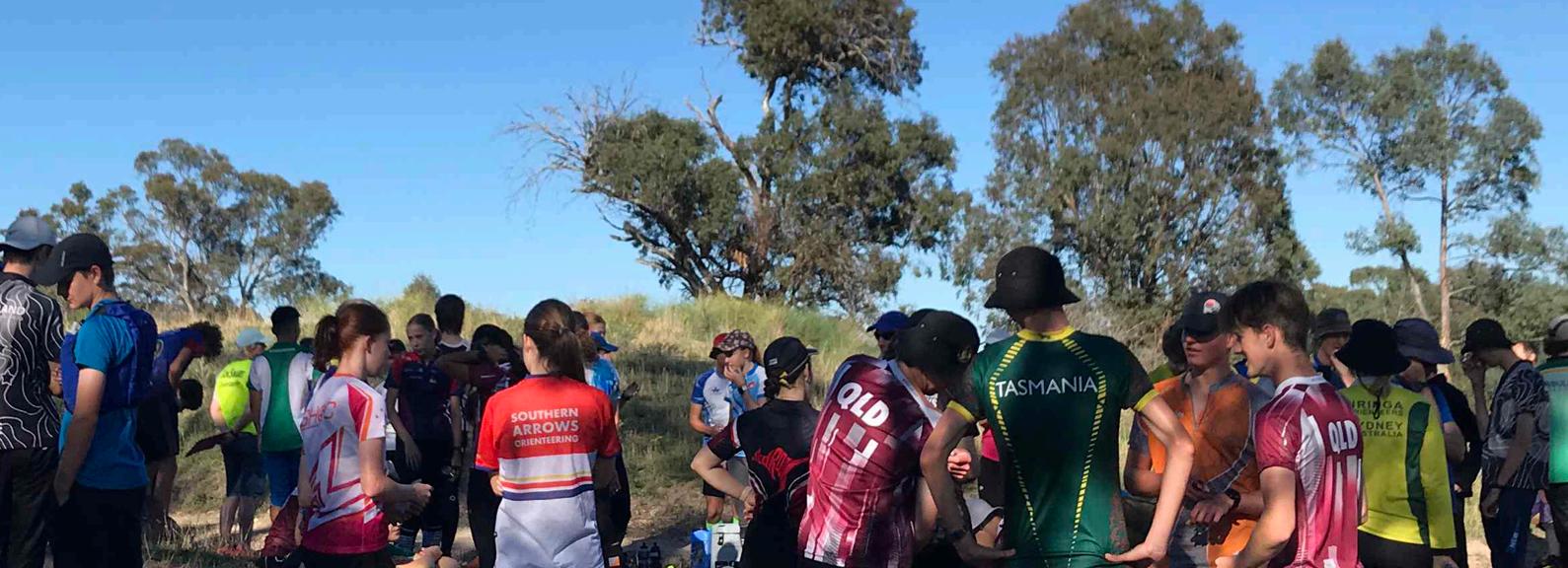

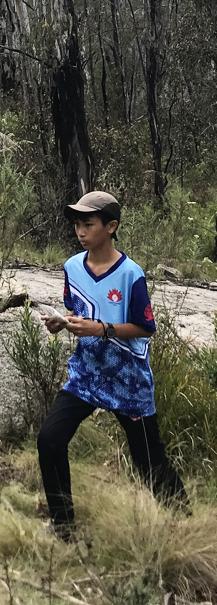
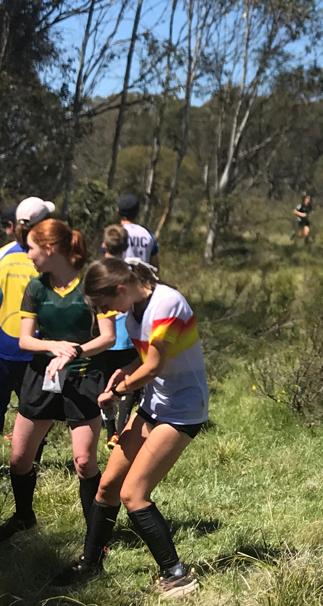

HANIA LADA TEXT AND PHOTOS UNLESS STATED OTHERWISE
The Australian Junior Development
Camp 2024, with Michael Radajewski as the main organiser, began on 14 December onthe hot Saturday afternoonin Canberra. The MapRun score course in the parkland around the National Library of Australia, the Old Parliament House, Questacon and the National Gallery of Australia offered a very interesting introduction to orienteering in the capital city.
In the evening all the participants took part in the trivia night, and heard the important message from Orienteering Australia's chief medical officer, Mark Freeman, to keep sipping water in hot weather. The second day of the camp sawtraining early in the morning to beat the heat. After a long walk admiringthescenery of the Canberra hills, juniors and coaches ran a series of downhill courses set by Tara Melhuish. Icy poles and
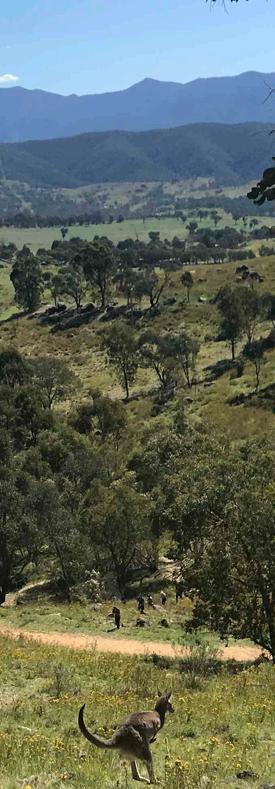
watermelon waited for the participants at the arena. In the afternoon, after many attendees took advantage of the swimmingpool at the camp accommodation, it was time for navigating around the large hill with much rock detail, on simulated relay courses set by Jo Allison and Shannon Jones.
Is it a kangaroo or an orienteer? Both! There were more icy poles at the finish.
In the evening Greg Barbour presented ‘Taste of Italy’, showing the maps of huge hills likely to be experienced at JWOC 2025. Rob Walter previewed Boboyan Divide, with the juniors getting to plan their routes for the first session the next morning.
Early on Monday, day 3 of the camp, everyone left around sunrise to make it to the southern edge of ACT to execute their plans for their courses on the granite maps, before it got too hot. The second training session followed soon after in a similar terrain. It was Andy Hogg’s pairs’ star technical relay involving a mass start and combinations of up to ten 0.7 -1.2 km loops, with a coveted prize for the top three teams to blow the horn. Participants were coming from, and going in, all directions. The training was wrapped up before noon, with the control collectors left to pick up the flags in the heat. The evening presentation was by Jason McCrae about building a good team environment.

Day 4, Tuesday, was another very early start on a hot day, and a long drive, this time to the beautiful Honeysuckle campground in the mountains. Four different navigation activities designed by Alastair George and Emily Sorensen awaited. The training


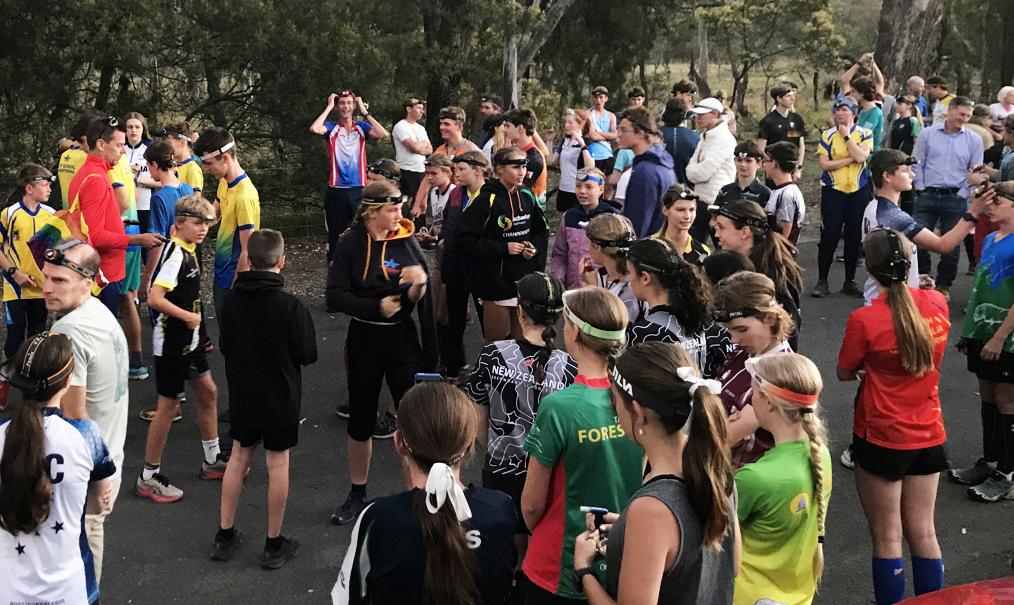
included big rock (simplifying many rocks into one), corridor (practising concentration and compass bearing), relocation (following tapes, relocating and finding the control), and a middle-distance practice. Everyone could do their courses in whatever order and combination they wanted. In the afternoon there was free time to rest and cool off, or to tick off many tourist sites on offer. Martin Dent gave the evening talk about his running career that includes the London Olympics marathon (24th), Commonwealth Games steeplechase (fourth) and winning the Sydney City2Surf race.
On day 5, Wednesday, the sprints at three different schools in Canberra provided much morning excitement, with every race resembling a Knock-Out final, and even runners’ choice added (selecting one out of three mini-loops to run). Courses had been set by David Stocks and Ewan Shingler. Several JWOC representatives, with cameras, followed the runners, providing extra pressure. Then, there was Night-O, prepared by Grant Bluett, in the Black Mountain Reserve abutting the camp. With headlamps on, and a lot of enthusiasm, the camp attendees set off. There were some eccentric outfits, misplaced howling, and one dodgy character trying to startle others. All made it back.
On Thursday, the camp finished with the champs, the Czechstyle pairs’ relay with the SI stick as the baton. Up to the top of Mt Taylor and down to the car park with teams’ members taking turns in navigating to the controls while their partners ran along the tracks to the baton changes at the designated controls. The courses had been set by Kelvin Meng and Oscar Brown. Finally,
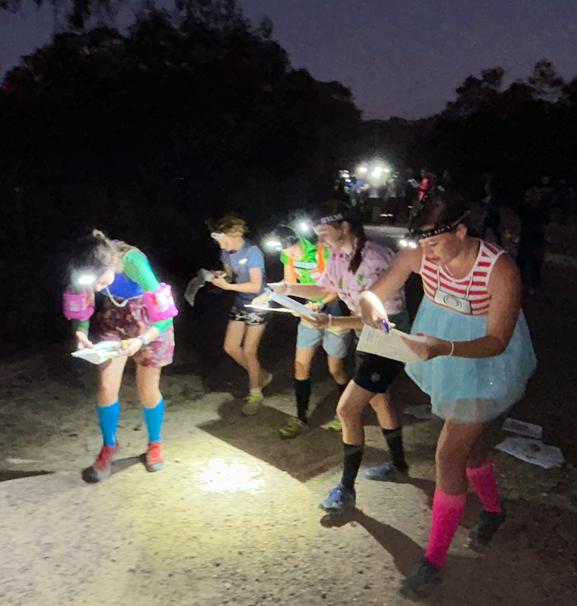
everyone returned, winning teams were announced, and new and old friends had to say good-bye until the next major orienteering event.
Well done to everyone who took part in the camp.Thank you to all the organisers and support team.It was a great experience!
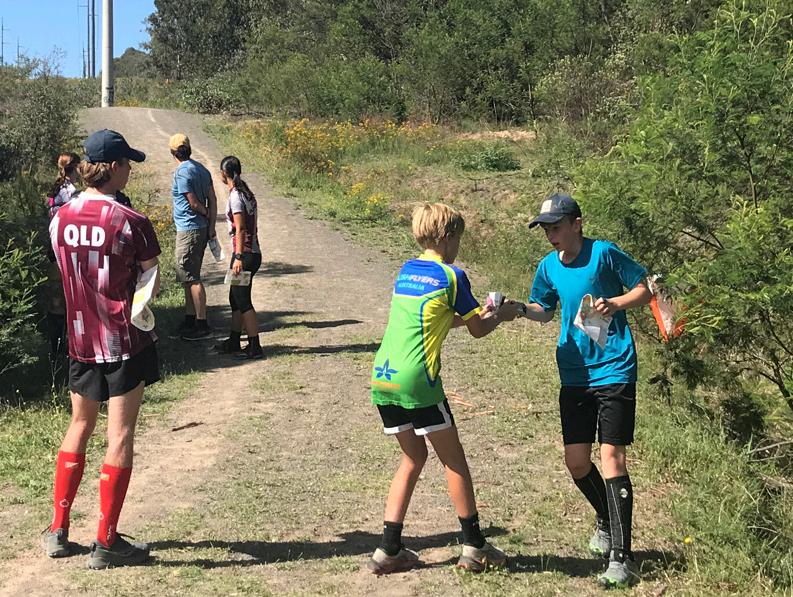
The activity that I think will be most beneficial for my orienteering was the contour activity at Isaacs Ridge. As I am transitioning to harder courses, I haven’t really focused on contour lines much before, and this activity helped me to look much more carefully at the map detail. Euan, NSW, M14. Practising different orienteering skills by taking part in the great variety of four activities at Honeysuckle Creek will improve my orienteering. Ella Maja, Victoria, W16.
Most beneficial for my orienteering would be the knock-out sprint sessions because I feel sprints are a weakness of mine. I learned to block out the other runners, which meant I could focus on my own race. I was able to put this into practice at the Xmas 5 Days a few weeks later. Rory, NSW, M16.
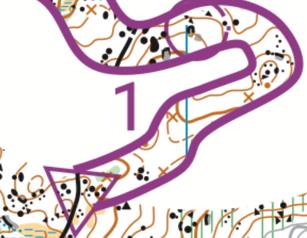
Training maps of the corridor (left) and simulation exercises.
CRAIG STEFFENS
Asmall crew of Aussie riders headed to New Zealand to contest the 2025 MTBO champs in and around the Otago region of the South Island. Central Otago Orienteering club staged three championship events, and a cyclegaine in and around Alexandra and Naseby. The first sprint stage was held on a small pine MTB trail area adjacent to Alexandra, and flowed out onto a nearby recreation ground and school. The tracks were firm and fast, and the riding frantic across the open mowed sports fields, and finished through the more technical areas of the school campus.
The middle distance followed on at the nearby Mataranki MTB park and reserve better known from its original map title of Linger and Die. With plenty of elevation and rocky technical trails, the complex navigation over this map challenged many riders, both mentally and physically. To lessen the competition climb there was a 4 km uphill ride to get to the starting area. After a short recovery riders were straight into the technical single tracks with many indistinct junctions and route options
SPRINT - M Open top three
1 Chris Forne NZ 25:35
2 Conal Boland-Bristow NZ 28:20
3 Ricky Thackray AUS 20:12
MIDDLE - M Open top three
1 Conal Boland-Bristow NZ 1:20:16 2 Tane Cambridge NZ 1:23:34
3 Ricky Thackray AUS 1:23:41
LONG - M Open top three
1 Tim Farrant NZ 1:59:23
2 Chris Forne NZ 2:00:20
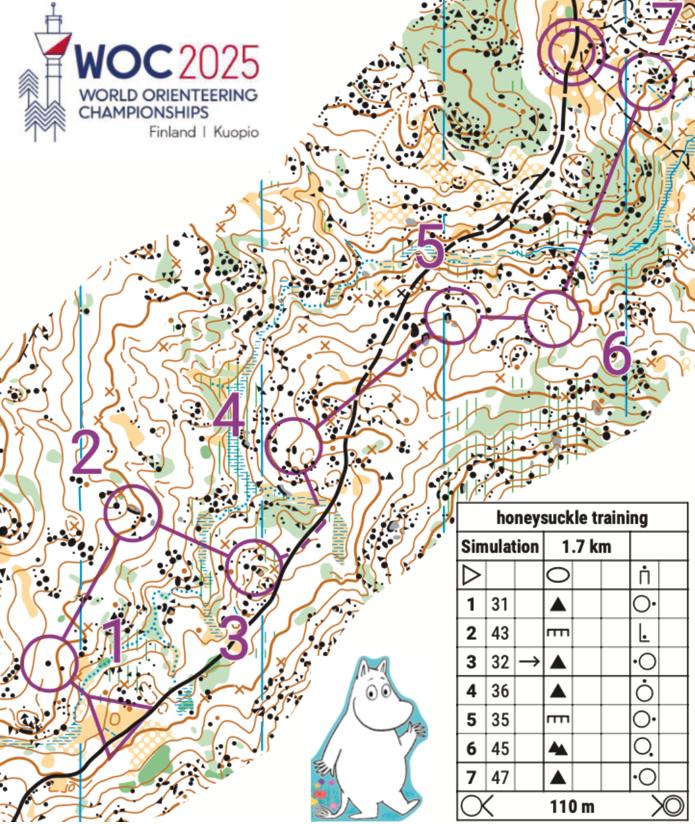
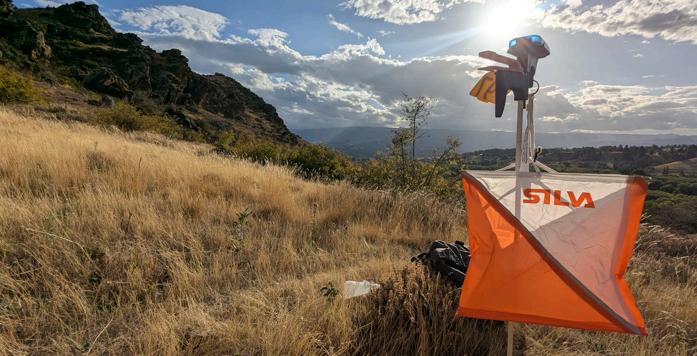
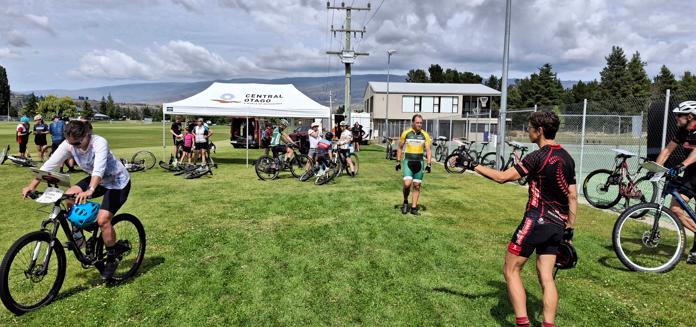
SPRINT - W Open top ‘three’
Overall, the camp provided great training opportunities to strengthen all aspects of our orienteering. It also provided lots of opportunities to catch up with interstate friends, in a fun but tough week. Gemma Burley, South Australia, W20, comment from South Australian Orienteer 1/2025. MIDDLE - W Open top ‘three’
3 Ricky Thackray AUS 2:10:55 LONG - W Open top ‘three’
before descending down onto the riverbanks where a myriad of trails spread to the finish.
The following day riders transitioned about an hour away to Naseby where the pine forests had the long-distance courses awaiting. The MTB trails through the area and the climb provided more challenging courses. Riders transitioned from bright sunlight on the forestry roads into near darkness under the thick pine canopy with many complex areas to confuse them. The final day concluded with a cyclegaine of 2 h on the long-distance map giving riders the option to revisit their previous day’s bloopers or look for sweeter trails to enjoy. Australians, winners: Gavin Bennette (M40, sprint, middle, long), Carolyn Jackson (W50, sprint), Richard Robinson (M70, sprint, middle), Hamish Mackie (M40, middle). See all results at https://www.mtbochamps.nz
MARINA ISKHAKOVA, OACT MTBO TEAM, PHOTOS BY JOHN HARDING
I
t was excellent to conclude the big year of MTBO in the ACT and Australia with the Wednesday Twilight event on 18 December at the beautiful Gossan Hill, renowned for its panoramic views. After several days of extreme heat in the ACT, with temperatures between 36-38°C, the temperature finally settled a bit under 30°C, attracting nearly 40 MTBO enthusiasts eager to enjoy a truly pre-Christmas MTBO experience.
Cathy Hogg and Mark Bourne won the long courses, Clare Lonergan and Thomas Carroll took first place in the middle category, and Veronika Iskhakova and Alex Maksimov claimed victory on the short classes. Also, due to the hot weather, some participants opted for the eBike class, where Antoinette Harmer and Martin Etherington emerged as the winners. The event concluded with the end-of-year drinks, providing a great opportunity to celebrate and say farewell to a fantastic 2024 year of MTBO in the ACT!We are very much looking forward to the emerging season of ACT MTBO 2025 with seven MTBO events, and we invite everyone to enjoy ACT MTBO again at 2025 ACT MTBO Championships, 18-19 October.


JOHN GAVENS, EDITED
The Victorian 2025 MTBO season kicked off in early February in near perfect conditions on the fast sandy You Yangs trails. Over 50 riders competed, including a strong contingent of scouts, parents and leaders. Riders approached the first ever MTBO ‘odds and evens’ format with some trepidation. They were required to choose to ride either oddor even-numbered block of controls and, and at their discretion change to the other block of controls. The format was a great success with riders choosing a multitude of options, and spreading widely over the course. The stand out performance and overall winner was Australian junior world representative, Maya Bennette. Maya continued her strong form from 2024 to cover over 27 km and score 760 points (p). Second overall, and the top man, was former Australian representative Alex Randall (710 p) who rode over 30 km but incurred time penalties. The highly competitive senior men’s was won by Anthony Jones (680 p) on time from Stephen Law, and Julie Merryful won the senior women’s (360 p). The junior men’s event was won by Cassidy


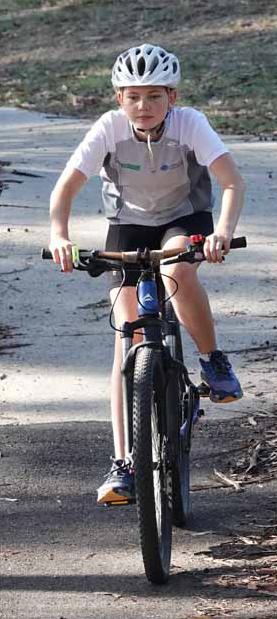
Browne on 550 p. Browne was introduced to the sport through the OV Schools MTBO Championship. Eight year old Emma Lothian won the junior girls (190 p). The increasingly popular e-bike class was won by Anthony Speechley (640 p) just ahead of Mel Biviano on 610 p.
Riders and supporters enjoyed cheese toasties, sausages, fruit and drinks following the event.










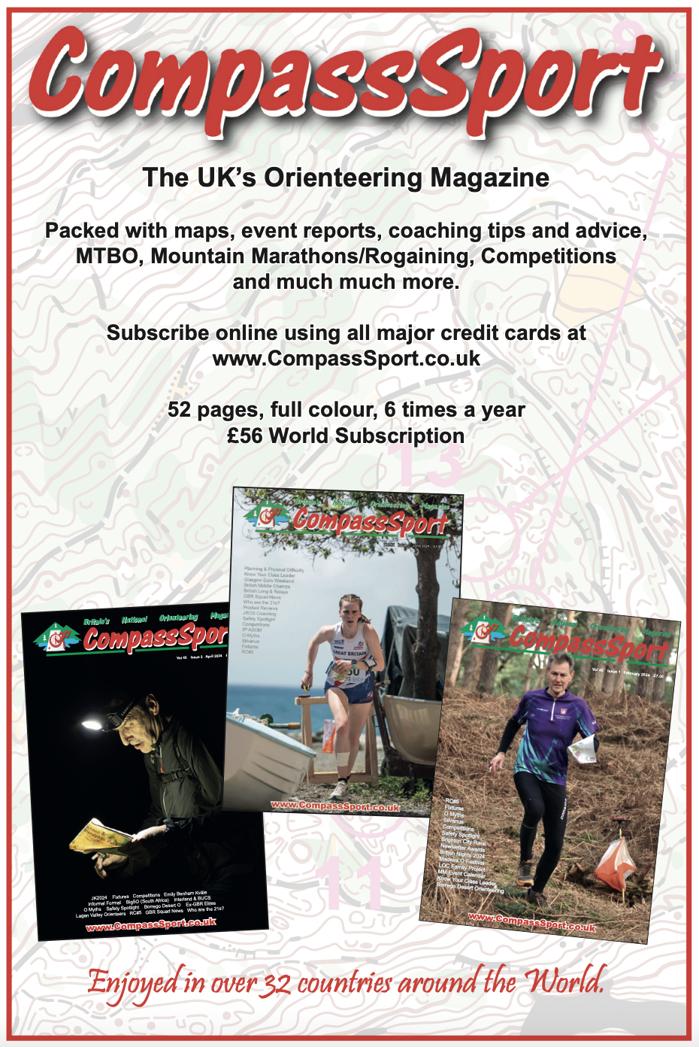
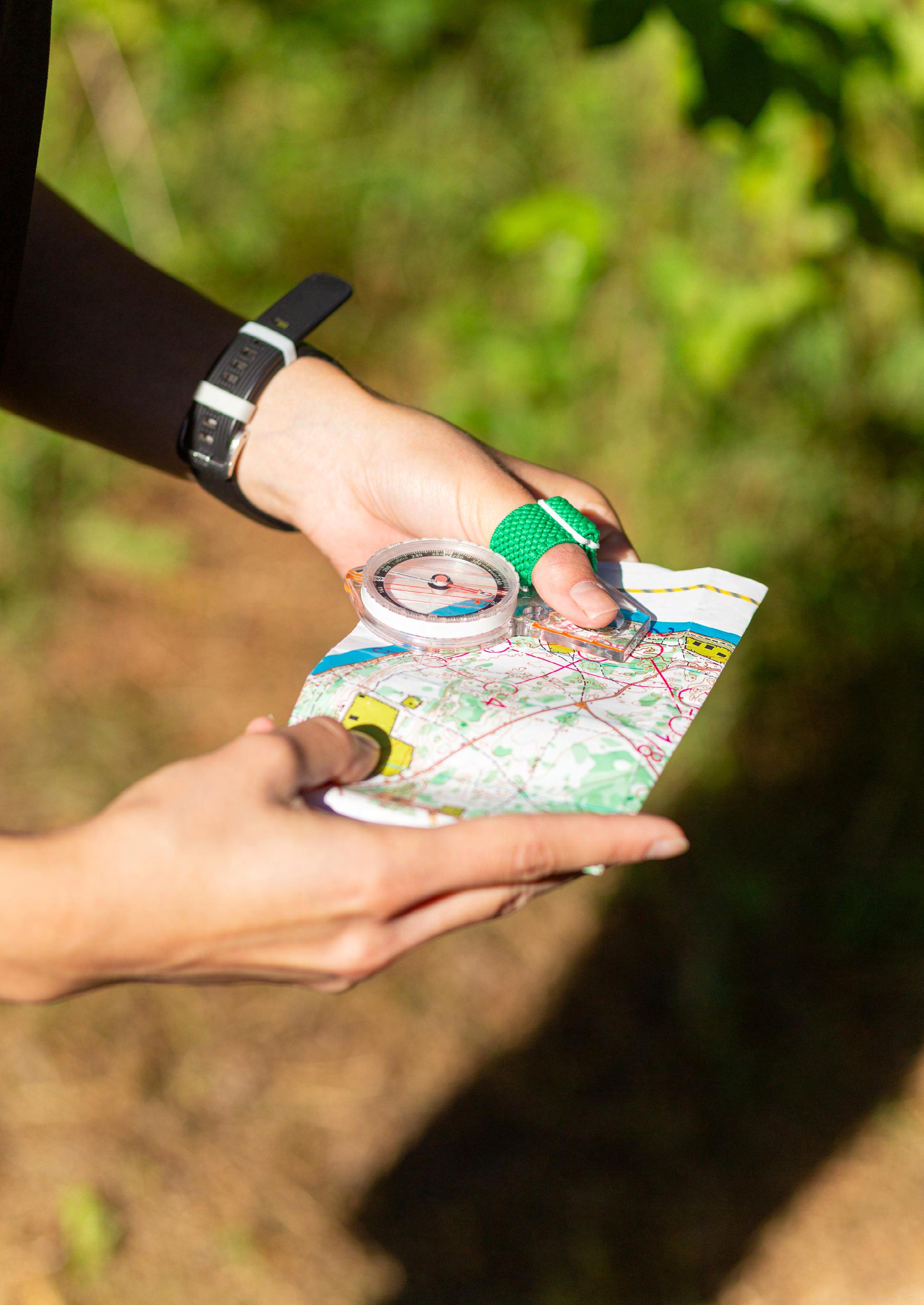
European Youth Orienteering Championships 2025 (EYOC2025) will take place inBrno, Czechia, 17 – 20 July 2025. https://eyoc2025.cz/
Programme:
17 July - arrival, model events
18 July - long, opening ceremony, friendship party
19 July - sprint
20 July - relay, closing ceremony, departure
Competing classes:
MW16 – born in 2009 or later MW18 – born in 2007 or later Czech O-Tour, three great races, will be organised on 18-20 July for all parents and public.
Australian EYOC Squad:
Due to a high level of interest in EYOC 2025, Orienteering Australia has decided to select an Australian EYOC Squad to compete in the championships. Information on the selection process, including how to nominate, can be found at OA website and at https://drive.google.com/file/d/ 1zQFHELsVZJF49nysWpRzz3SF_4YiJOPv/view
Nominations close on 17 March 2025.
If you would like to attend, please be in touch with Marina Iskhakova (squad coach) and Fedor Iskhakov (squad manager) marina.iskhakova@gmail.com


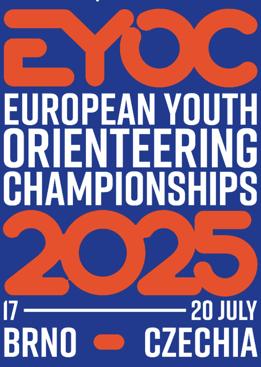
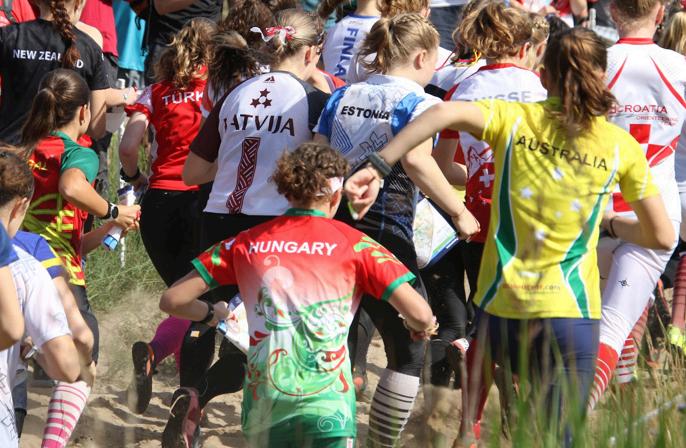

DAVID ROSEN (ASSISTANT REFEREE AT WOC 2024 AND THE CHAIR OF THE IOF RULES COMMISSION) COURTESY OF COMPASSSPORT 40TH WORLD ORIENTEERING CHAMPIONSHIPS SOUVENIR PROGRAMME
WOC 2017 ESTONIA In the Sprint Qualification, there was a protest about a competitor disqualified for wearing dobb spikes. The bulletin had said ‘Spike shoes are not allowed for Sprint Qualification, Sprint Final and Sprint Relay.’ Clarification was requested in the Team Officials Meeting and the Q&A were published afterwards: ‘Q: Is it spike shoes are allowed?
A: Not permitted to use any metal studs/spikes.’ The jury rejected the protest.
WOC 2017 ESTONIA In the Sprint Final a competitor was disqualified for going through a section of street that was shown with uncrossable barriers at each end. The competitor complained and then protested that he should not be disqualified. The street was about 10 m wide but the barrier was only about 3 m wide so there was plenty of room either side to pass. Also, there were many spectators and members of the public who were obstructing the athletes’ view of the barrier. The map showed a continuous barrier so it was reasonable for the competitors to expect to find some sort of obstruction. The jury upheld the protest and said that the competitor, plus the two other runners who had been similarly disqualified, should be reinstated. Artificial barriers in towns very often cause problems. The barriers cannot be completely closed because members of the public need to be allowed through. Such barriers need to be high enough and substantial enough to be real obstructions. If it is necessary for members of the public to pass, then a marshal is required to let the public through but bar the way for athletes.
WOC 2018 LATVIA A runner had a missing punch and protested that he had failed to record a punch because his e-
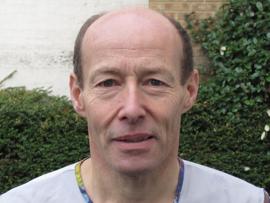
card was still flashing (and therefore unable to record a punch) from a nearby control. The two controls were 16 m apart and the SIACs flash for 2.4 s so the runner would have had to have been running at a speed of 60 s for 400 m for his SIAC to still be flashing. The jury rejected the protest. Nevertheless, for the future, the minimum proximity between sprint controls has been increased to 25 m.
WOC 2022 DENMARK In the Sprint Relay, a group of highlyplaced runners ran into an Out-of-Bounds area. It was scrub land beside a railway line. There was no way out and they all turned round and came out the way they had come in. The organiser did not take any action but there was a complaint and then a protest that they should be disqualified. The jury decided that the four teams got no benefit from the mistake they made and that the time loss in itself was enough of a penalty. The jury rejected the protest.
It is often the case that there is no 100% correct answer when an incident occurs. The jury or referee must use their best judgement to come to a decision according to the rules, bearing in mind Rule 2.7 which says ‘Sporting fairness must be the guiding principle in the interpretation of these rules by competitors, organisers and the jury.’ They have to make a decision in order that the results can be finalised and the award ceremony can proceed.
The IOF Commissions take note of Complaints and Protests at major IOF events and consider whether there any lessons to be learnt. Sometimes, a case will suggest that rules or procedures need improving.
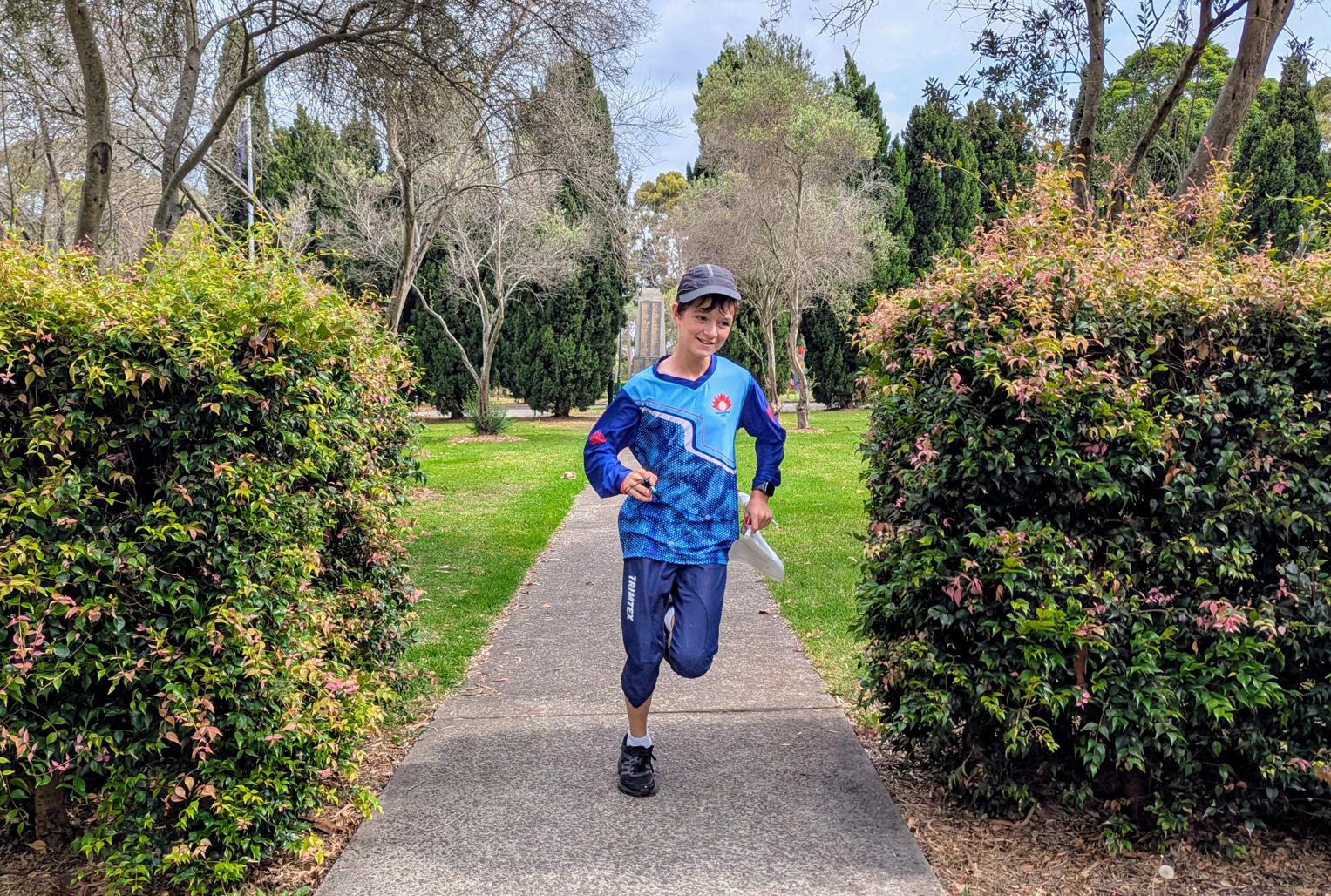

Xmas 5 Days 2024 in Sydney became an eight-race four-event three-day series with the hot weather forcing changes to the schedule.The events, in chronological order, included Day 2 three sprint races in Centennial Park (the cumulative time counted for the result), then Day 1 3D sprint (on the afternoon of Day 2) at Pennant Hills High School, followed the next morning by Day 3 middle-distance in Chippendale, and culminated on December 31 with Day 5 ultra sprint consisting of three races in Pioneers Memorial Park.
The best three results out of the four events counted for the final score, with every winner of each event obtaining 100 points. There



were five overall winners who scored the maximum 300 points, Cooper Horley (NSW) in men A, Mikaela Gray (Qld) in women A, Dylan Bryant (Qld) in men B, Catherine Bilmon (NSW) in women B, and Steve Flick (NSW) in men D. Helen Murphy (NSW) won women D on 284 points, and the winners of the remaining courses, men C Matt Roberts (ACT), women C Layla Dent (ACT), and men/ women E Alon Gudes (NSW) all scored 297 points by winning two events and coming second in their third.



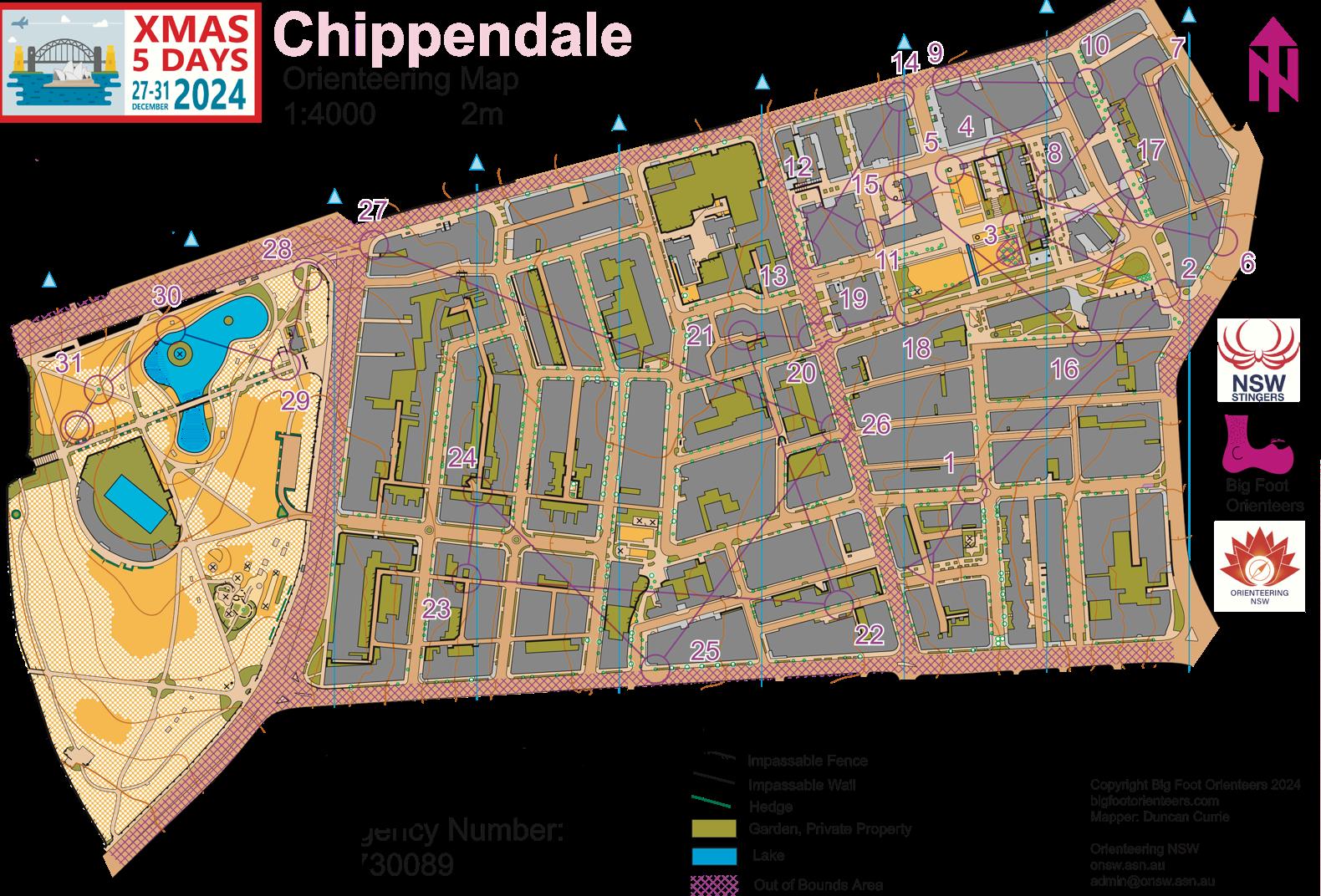
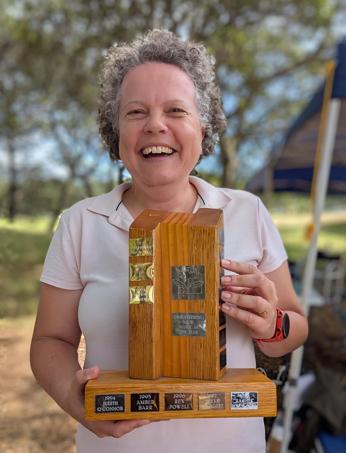

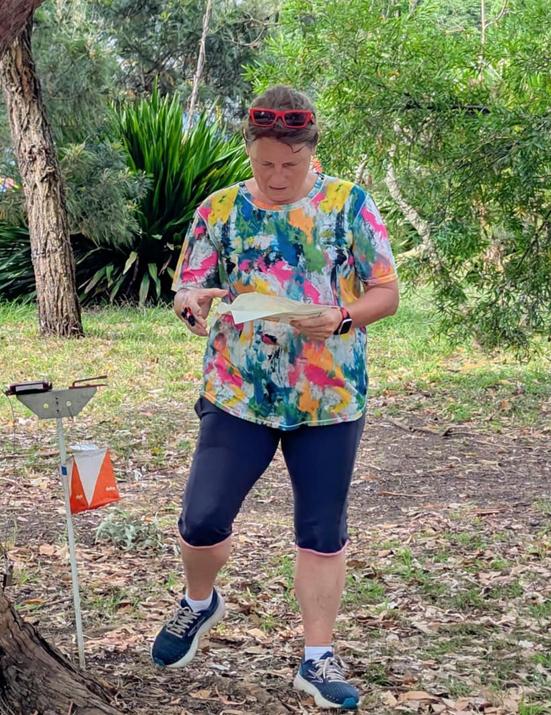
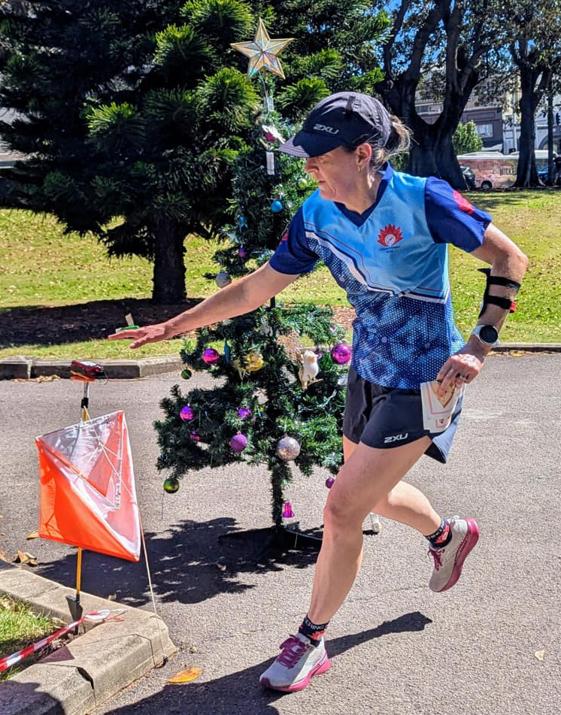

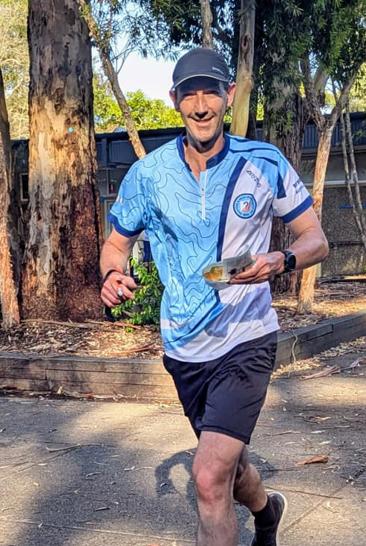



What are the five differences between the two maps?
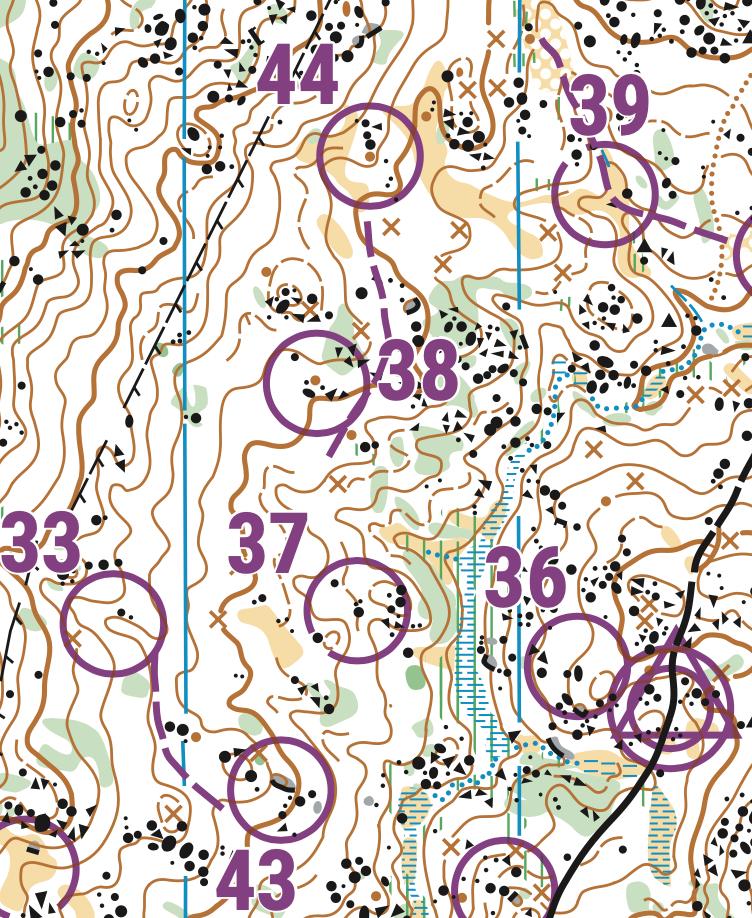
1. On the master map above what are the brown crosses depicting?
A. Manmade object.
B. Cliff.
C. Pit.
D. Termite mound.
2. Where is the highest point on the map?
A. NW corner of the map.
B. NE corner of the map.
C. SE corner of the map.
D. Hill just south of 39.
HANIA LADA
Find a slope line on the map below. Draw five more slope lines to help someone learning about contours.

3. On the master map above the dashed purple lines indicate tapes for the relocation exercise.
Where do you end up when following tapes from 33 to 43?
A. In a gully.
B. On a spur.
C. In a clearing.
D. Below a cliff.
The answers are on page 46.
https://forms.gle/D5Yo71qqKfij7FSz6
Follow this link to post-print corrections, quiz and survey on one form. Check out what mistakes in the current edition have been discovered too late, feel free to attempt some or all quiz questions, and provide data by completing the survey.

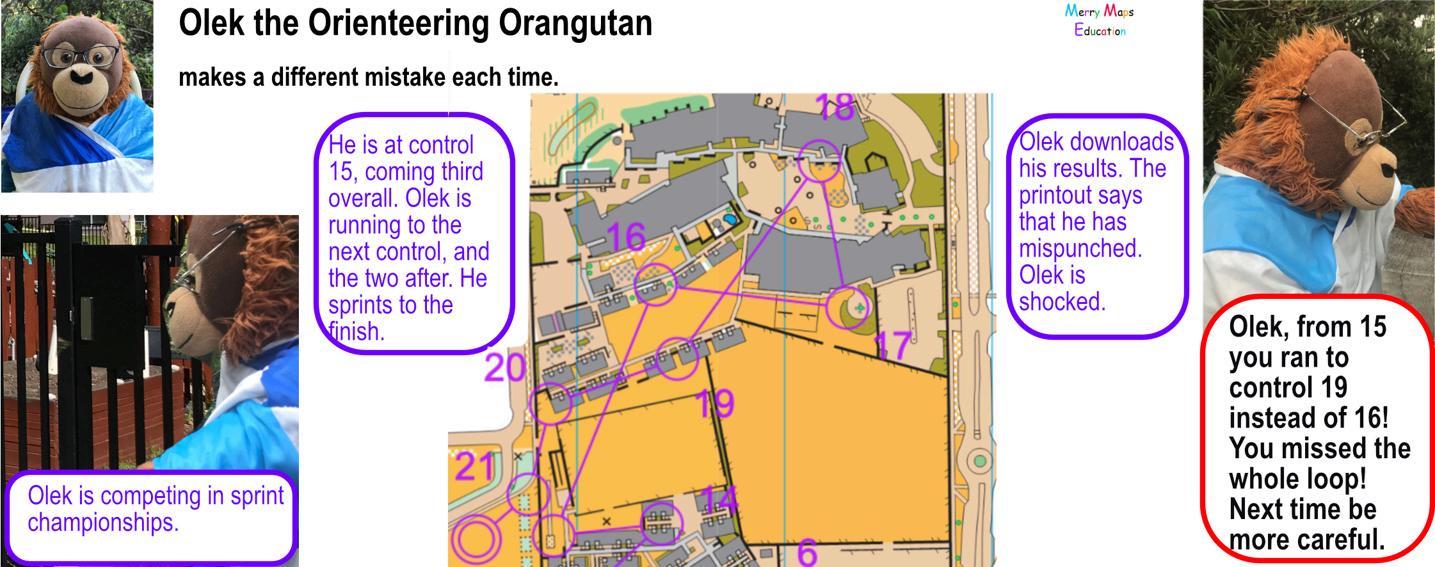


The Orienteering Course of the Year 2024 is averytechnicaland fast middle-distance course inSpain:the superelite men’s stage 2 of the Maximus O Meeting 2024!
The courseofferedtechnicalorienteering at high speed, testing a variety of skills.The terrain, never used for orienteering before, looks like a dream for a course setter: lots of rock features such as boulders, cliffs and small rocky outcrops, but still a very fast ground that enables high-running speeds, in the mixed pine and oak forest. Course setter, Raúl Ferra, (see the interview) managed to set a challenging and diverse course in this terrain.
For the second year in a row we have a middle distance course winning the Course of the Year contest – last year the World Orienteering Championships Middle was crowned the Course of the Year In 2024 we had a very good geographical spread, withseven
different countries in the Top 7: Spain, United Kingdom, Italy, Sweden, Finland, Portugal and Hungary. Norway was also in the Top 10.
The Sprint Course of the Year 2024 was the World Orienteering Championships (WOC) Sprint, in second spot overall, not many points behind the winning course. Whereas allcourses in the Top 10 in 2023 were forest courses, we had threesprint courses in the Top 10 in 2024, probably due to 2024 being a ‘Sprint WOC’ year, with more focus on sprint orienteering on the international arena.
The Long DistanceCourse of the Year 2024 wasactually an ultralong distance competition, the Swedish Championships Ultralong, finishing fourth overall, with some very interesting orienteering and great long legs.
Q: Congratulations for your course being awarded Course of the Year 2024! What was your overall plan behind how you wanted to challenge the athletes on this course?
Having an exceptional terrain like Dehesa de Navaluenga, where our mappers Janne and Timo did an outstanding job, makes the course setter’s work considerably easier.
My overall plan for the course was to challenge the athletes with a technically demanding course, requiring precise orienteering both in navigation and in control attacks, while minimising physical demands to make technical skills the limiting factor. I aimed for short to medium-length legs, designed to test a variety of skills: compass work, use of contour lines, simplification, and route choice.
After the spectator control (C18), I wanted a simpler final loop where running speed would increase but still include a couple of tricky controls.These would challenge the athletes’ ability to stay focused despite high speed and fatigue—and that’s exactly what happened.
Q: Did you get any surprises with respect to which route choices were fastest or where the athletes made mistakes?
I was aware that many runners would make mistakes throughout the course, as the technical demands were very high, making it challenging to complete the race cleanly. Overall, things unfolded as I expected, although I anticipated fewer issues among the top athletes in the final loop, which ultimately proved decisive.
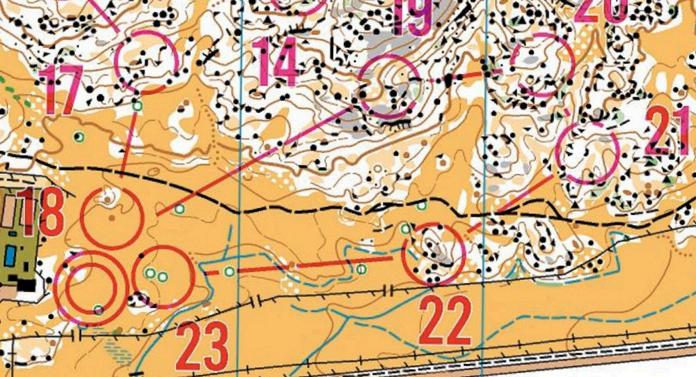
While major route choices weren’t a key feature of this course, there were still several legs where route options spread significantly. In these cases, clean execution was more critical than the choice itself.
Q: Can you take us through the main challenges on the course, highlighting the legs where you see special challenges?
The first leg was key to setting the tone for the race.The middle section of this leg was somewhat vague and required good directional control and an effective attack point.The exit direction towards control 2 was important, although the placement of this control was relatively straightforward. This allowed runners with strong technical routines some time to plan their route choice for leg 3.
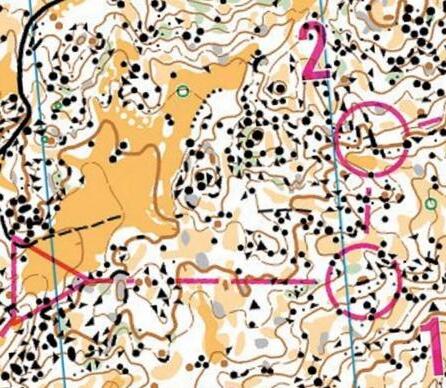

Control 3 was perhaps the most decisive in terms of route choice, offering a balance between risk and speed: runners could choose to navigate relatively straight or slightly to the right or take a safer option by climbing to the path, running at maximum speed, and entering the control more easily.


At the highest part of the course, controls 4-5-6-7 demanded microroute choices, simplification, and very precise map reading. With frequent 90-degree directional changes, finding a good flow and avoiding mistakes was essential.
Navigating to controls 8 and 9 required one of the most challenging skills: running diagonally downhill. Control 8 was in vague terrain, while control 9 was in highly detailed terrain with difficult runnability. The leg to control 10 allowed for higher speeds across open areas (crossing the bare rock, which I included for its stunning beauty), with a somewhat tricky attack to the control requiring a solid entry plan. Control 11 served as a transition, while control 12 was designed to raise the athletes’ pulse just before another mid-length route-choice leg to control 13.

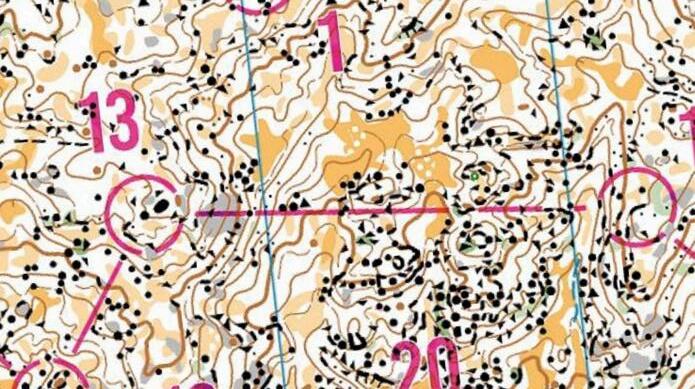
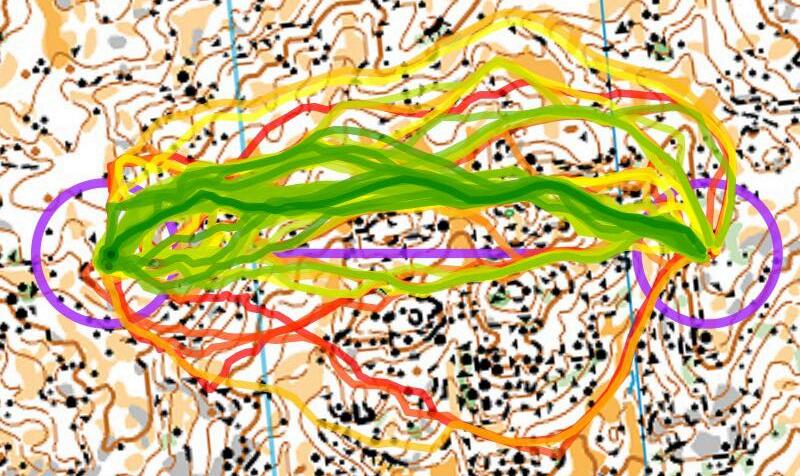
Here, anticipating areas of easy runnability and avoiding parallel errors, through proactive map reading, was critical.
After the climb to control 13, runners faced another diagonal downhill leg in an area with intricate micro-relief.This proved decisive, as many athletes lost valuable time here due to execution errors.
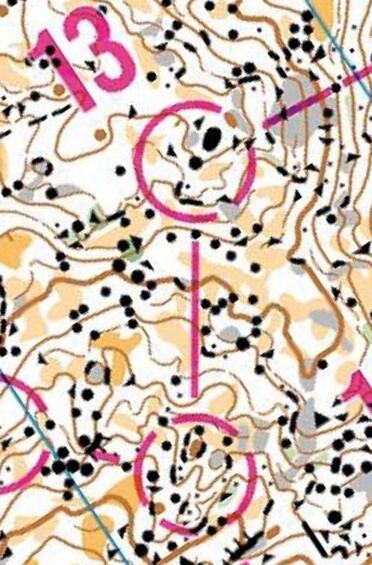


Controls 15 and 16 followed the contour line, where object simplification was vital to maintain high running speed.The leg to control 17 involved another diagonal downhill near the open area,
followed by a stretch of full-speed running towards the spectator control.

That speed extended for about 300 m into a demanding climb to control 19, followed by two challenging controls (20 and 21) requiring precise reading.The final section leading back to the finish in the dehesa pushed runners to their maximum speed, still demanding clean execution at control 22.


Q: What is your favourite leg on the course – and why?
Oh, that’s a very tricky question! It’s hard for me to single out one leg from the course, as I like to think of the course as a whole. Each leg is designed with the runner’s perspective in mind at that specific moment, taking into account what they’ve already experienced and what still lies ahead. But if I have to highlight one, I’d choose leg 13-14. It requires all your skills to maintain a good direction and simplify the area within the control circle to nail the control perfectly. Furthermore, the physical requirements are not important here (as it is downhill), so it is all about technique.
Q: Did you consider making a longer route choice leg than the one included?
Yes, I was definitely tempted to include a longer route-choice leg, and in fact, some of the early versions did include it. However, it ties into the same thinking as my answer to the previous question. I consider the overall challenges of the Maximus O Meeting with its four days, and for the middle distance, I decided to focus on a more direct style of orienteering that emphasised execution.There are other stages where I prioritised longer legs with more route choices. In the end, it’s all about offering variety in terrain and challenges.
Q: This was a new area for orienteering according to the bulletin –how did you find this area? And do you have more unused areas like this available in the area?
Yes, this area was completely new and never used for orienteering before. Since we started the Maximus project, our main goal has been to find special terrains and provide the highest possible quality for participants who choose us.To achieve this, we carefully search for good, varied terrains each year. We discovered this gem a few years ago, but we were waiting for the right moment to make use of it, with the proper recognition and the right event for it.
And yes, we still have many interesting, unused areas in the region. For MOM 2025, we will unveil some areas that will truly impress everyone. Additionally, we have great news: this map used for the ‘Course of the Year 2024’ was only utilised about 50%, which means that for MOM 2026, we plan to return here for another unforgettable middle-distance course, using the eastern part of Dehesa, which is just as, if not more, exciting. And of course, it has been mapped by Janne and Timo as well.
Q: When did you start planning the courses – and how many hours do you think you spent on them?
The truth is that I have many commitments during this time of year with the training designs for Maximus Winter O-Camp and Sun-O camps, so I don’t always have the lead time I would like to start designing MOM. Additionally, living in Halden, Norway,
limits my visits to the terrain.
For this specific case, I started sketching out possibilities in August/ September, making a terrain visit in late October to run some legs and better understand the mapping criteria, different runnabilities, possibilities, and weaknesses of the terrain. In December, taking advantage of the Christmas holidays, I returned to the terrain with the preliminary courses in mind, and everything was finalised a month before the event, in mid-January (the event was held in mid-February), after the IOF Event Advisor’s visit.
It’s impossible for me to calculate the exact number of hours spent on the design… but it was a lot! Luckily, I enjoy the job!
Thanks a lot for the interview, Raul – we look forward to more interesting courses from your side in the years to come!


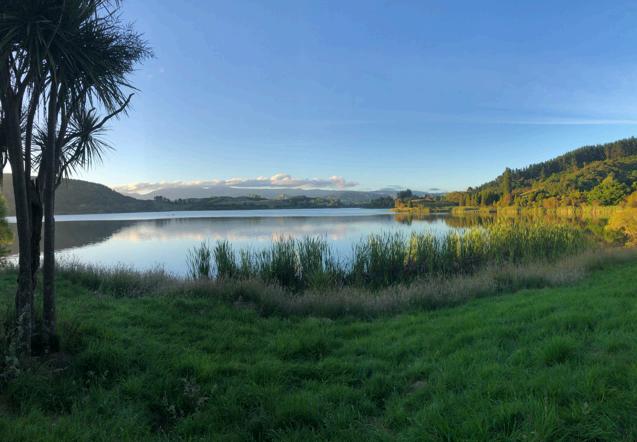

JAlastair George: Running NZ QB Tour was incredibly valuable for me as a junior as it provided excellent exposure to new interesting terrain which certainly helped in my transition into elites, while making some great friends along the way! I would highly recommend this trip to any keen junior.
Events are located around Hawke’s Bay 3-4 h drive north of Wellington. The meet-up location will be in Wellington or at the event centre in Hawke’s Bay - to be confirmed. Ground transport will be arranged. Places on the 2025 NZ KB Tour are limited. Register your interest ASAP.



There is no selection process for inclusion, however juniors are expected to demonstrate their commitment to the sport, be able to meet all financial obligations and understand the issues associated with international travel and accommodation logistics. Interested juniors should provide a brief expression of interest, including approval from parent/guardian, along with a current training plan as a demonstration of commitment.
Note: This tour will require a current passport, and overseas travel. It willlikelyrequire 2daysoff schooldue to the event distance from an international airport.
For more details contacttour leader Toni Brown at totoni@iinet.net.au

uniors, aged 14 to 17, listen up! Even if you missed Oceania Champs in New Zealand, it’s not too late to hop across the ditch for a dose of fun and fabulous NZ terrain. If you are hungry for new wild running experiences on maps unlike any you have seen before then this tour is for you. You will develop your orienteering skills, make new friends for life, and join the gang of Aussie and Kiwi children preparingfor the Australian Schools Orienteering Championships (ASOC) in Queensland in September https://www.auschamps25.com/asoc If you’re a bit younger than 14 but burning with ambition, reach out, let’s talk! Parentsare invitedto join as well! We will be part of the 2025NZ King’s Birthday Tour (2025 NZ KB Tour) on the North Island, 31 May to 2 June 2025. OrienteeringAustralia endorses this tour because it encourages inclusion and helps to grow participation. Mike Dowling, OA Chair, says: This is a wonderful opportunity for our young orienteers, and is a great initiative Two Australian representatives at JWOC and WOC concur Caitlin Young: NZ QB Tour was my first overseas orienteering and was a great opportunity to run in some stunning terrain but also develop my technique as some of their maps were nothing like what I had run on in Australia. I think this was a great stepping stone that helped my future racing in Europe by helping me become more adaptive in my navigation as well as getting experience racing against people a lot stronger and more experienced than myself!
DEBBIE DODD

he Victorian Orienteering Association (VOA) was established in 1970 with David Hogg as the president. VOA encouraged formation of orienteering clubs, and in 1972 nine clubs joined VOA: Bayside, La Trobe University Mountaineering Club, Peninsula, Red Kangaroos, St Leo’s (College), Melbourne University Mountaineering Club (MUMC), Super Turtles (Monash Uni), Tuckonie, and Yarra Valley. Other clubs followed: Albury Wodonga, Bendigo, Brumby (became Melbourne Forest Racers), Eureka, Eltham College (became Nillumbik), Dandenong Ranges, Central Highlands and ARDFG. Navigators, EMU, Geelong, Rockhoppers, Sunraysia and Warby were also formed but folded or merged.

Albury Wodonga Orienteering Club was founded by Lester Sawyer and Anne McLeod-Nibbs in 1975 with assistance from Danny Flynn, a top marathon runner who spent several years with a Swedish orienteering club. Our club trophies bear the founders’ names and we will celebrate 50 years at our championships on the first Sunday of November 2025. The AWOC logo, a blind-folded chook running on top of a compass, was designed by Austrian mountain runner and orienteer Max Scherleitner. Our club colours are maroon and dark blue. AWOC is known for the High O at Falls Creek and Dinner Plain, and for the arduous 11.3 km Nail Can Hill Run where in 2003 Steve Moneghetti established the race record time of 34:57.

MIKE HUBBERT, BAYSIDE KANGAROOS WEBSITE, EDITED

When orienteering started in Victoria, there was only one ‘club’, the Victorian Orienteering Association. It was soon realised that there was a need to create several clubs to spread the workload of organising events and to provide a focus for members. The first club was the Red Kangaroos (RK) which was formed in 1972. This club targeted business people from all over Melbourne. At about the same time, Bayside Orienteers was started with a geographic target area of the beachside and neighbouring suburbs. In December 1991, a meeting attended by members of Bayside Orienteers and the Red Kangaroos Orienteering clubs, voted to amalgamate, with the new club to be known as Bayside Kangaroos Orienteers, under the leadership of Murray Hanna, the inaugural president. As many members had grown very attached to their original club the decision to join together saw a small number, sadly walking away from the sport. However those who continued with their interest in orienteering have witnessed a club that has flourished, with members from all over the metropolitan area and Geelong.

Dandenong Ranges Orienteering Club (DROC) was formed in 1978, with an initial membership of 50, and Steve Key as president. Today we are one of the largest clubs in Victoria. The distinctive red, white and blue lyrebird has always been our emblem, representing the forests of the Dandenong Ranges in Melbourne’s outer east. Our earliest maps, such as Carinya Cutting (Mt Evelyn), Gembrook and Belgrave South featured steep slopes, tall trees, and deep fern gullies, but nowadays we prefer to orienteer in more userfriendly terrain! Our flagship event is the Melbourne City Race, which has been held annually since 2019; we have also pioneered indoor orienteering in Australia.
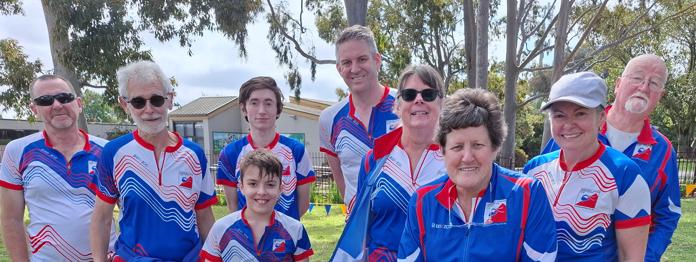
BLAKE GORDON

Eureka! That shout was first heard in Canadian Forest, Ballarat, on 25 February 1975 when the Eureka Orienteers Inc was founded. The Eureka flag was an obvious choice for the new club’s logo. Tom and Lesley Norwood were instrumental in organising the first local event on 16 May 1975 (a fordiograph map), and a state event on 20 July, a combined effort with the Red Kangaroos at Slaty Creek. Ballarat was soon on the national orienteering map with the 1978 International 5-Days in January, followed by the 1981 6-Days Orienteering, 1985 WOCARN at Slaty Creek, 1992 Easter 3-Days, 1993 World Cup Events at Nerrina and Enfield, 2004 World MTBO Championships, 2006 Deaflympics, and the Australian Championships in 2015 and 2022. Eureka's iconic event, the Eureka Challenge, introduced by Rob Plowright and Roch Prendergast, encouraged elites to 'step up' to world orienteering events. 2025 is Eureka’s 50th anniversary, with so many memorable events to celebrate!
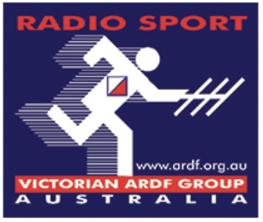
ARDFG WEBSITE
The Victorian ARDF Group is a club dedicated to the enjoyment, promotion, and support of Amateur Radio Direction Finding (ARDF), sometimes called Radio Orienteering or RadiO Sport. We are based in the city of Melbourne, in the state of Victoria, Australia. This puts us in International Amateur Radio Union (IARU) Region 3. Our club is incorporated in Victoria as a non-profit organisation and is affiliated with the Orienteering Victoria (OV) and the Wireless Institute of Australia (WIA). Our members may also be found participating in the related sports of orienteering (both bush and street), rogaining and amateur radio fox-hunting.

MFR WEBSITE, EDITED BY CLARE BROWNRIDGE
Melbourne Forest Racers (MFR) is a highly active and vibrant orienteering club based in the inner suburbs of Melbourne, but with members all over Victoria. MFR was founded in 2002, making us the youngest of the Victorian orienteering clubs. What started as a social training group for a bunch of young Melbourne orienteers has turned into an enjoyable club for all ages. Members range from current and former national team members to people just starting out with orienteering. There’s always a fantastic international spirit to the club, with past members from Sweden, Estonia, United Kingdom, France, Finland, Denmark and New Zealand. MFR offers the perfect mix of the serious and not-soserious sides of sport and we’ve always prided ourselves on the social aspects of the club – the MFR Christmas party is legendary!
LAURIE NIVEN

Nillumbik Emus Orienteering Club (NEV) was born in 1993 after a series of amalgamations since MUMC joined the VOA in 1972. It combined the Emus (Ex MUMC), La Trobe Uni Mountaineering Club, Rockhoppers, Geelong, St Leo’s, and Eltham College (renamed Nillumbik). Nillumbik Shire runs north from the Yarra to Kinglake, NE of central Melbourne. For the Wurundjeri People it means 'poor soil’ or ‘bad lands’, or even ‘go and get lost’ but for NEV’s members, dispersed across Melbourne, much more important is the joy of emulating the fleet-footed emu in the club’s logo, in the club’s colours of blue, white and green. The disbanded Rockhoppers had created the Rockhopper Trophy for the #1 club in state events; NEV won this 11 times in its first 13 years! The club has a strong park-street cohort but an equally strong bush orienteering focus, members who rogaine, regularly Park Run, and families who support each other. President since 1998, Ron Frederick received an OAM in 2023.






DAVID HOGG
Established in 1972 in the western suburbs of Melbourne, Tuckonie is one of the two original Victorian clubs to survive for over 50 years without merging with another club. Its name has been translated as ‘Little men of the forest’. It was one of the most active clubs on the early Victorian mapping scene, produced many formidable competitors, and its members have been influential over the years in the management of Victorian orienteering and the local development of computer technology for major events. Tuckonie was one of the early leaders in embracing urban park mapping, especially for school use.
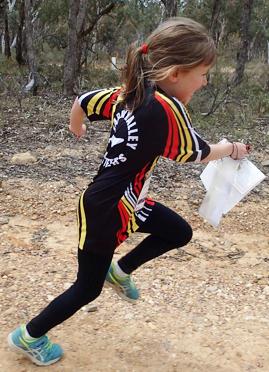

DAVID HOGG
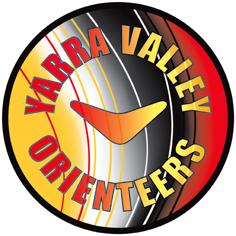
Yarra Valley Orienteering Club (YVOC) formed in the northeastern suburbs of Melbourne in 1972, with Alex Tarr as the first president. In 1976 the boomerang was chosen as the club logo. Peta Whitford designed the first YVOC running suits, and they were made from the material she had brought in 1976 from Sweden after training there for the World Orienteering Championships in Scotland. Navigating 45 years: A history of the Yarra Valley Orienteering Club 1972-2017, and Golden Jubilee 50 years in the bush are Peter Black’s books showcasing the club’s history, social aspects and achievements in competitions, event organisation, mapping and administration YVOC’s mission is to enable people of all ages to participate in orienteering for pleasure and to compete. The club’s members are highly active in bush, mountain bike and urban orienteering.
Bendigo Orienteers began its life in 1977 as the Bendigo Bushwalking and Orienteering Club, formed at the then Bendigo Teachers’ College under the driving force of Peter Lawrence, who had previously been active in the early years of orienteering in Canberra. The club soon became focused on orienteering, producing its own local maps and running its own events to complement the VOA program. The club came of age in the leadup to the 1985 World Orienteering Championships, which were based in Bendigo. Led by Peter Searle, club members took on many key roles in the organisation of the WOC85 program.
MARK HENNESSY AND WENDY TAVERNA
Central Highlands Orienteering Club (CHOC) was formed in 1983, with the priorities of recruitment of new members, novice instruction and coaching, Come and Try It events close to towns in the Central Highlands, and assistance to school teachers. Our first event was held on Mount Macedon in 1983 at Braemar College and surrounding forest, in the aftermath of the Ash Wednesday bush fires, attracting many new members from the Macedon Ranges and beyond, which remains the heartland of the club. That year the committee adopted the green and yellow colours of wattle, and the kookaburra logo indicating laughter and enjoyment of the bush. Our approach is to provide newcomers, especially young families and primary school students with pathways to enjoyable navigational and physical challenges, matched to their skill level, close to home. Several CHOC members have represented Australia, from our inception to the present day. We are a small proud club who contribute in many different ways to the jigsaw puzzle that is orienteering in Victoria. One recent highlight was hosting the Australian Schools Sprint Championships at Kyneton in 2022.

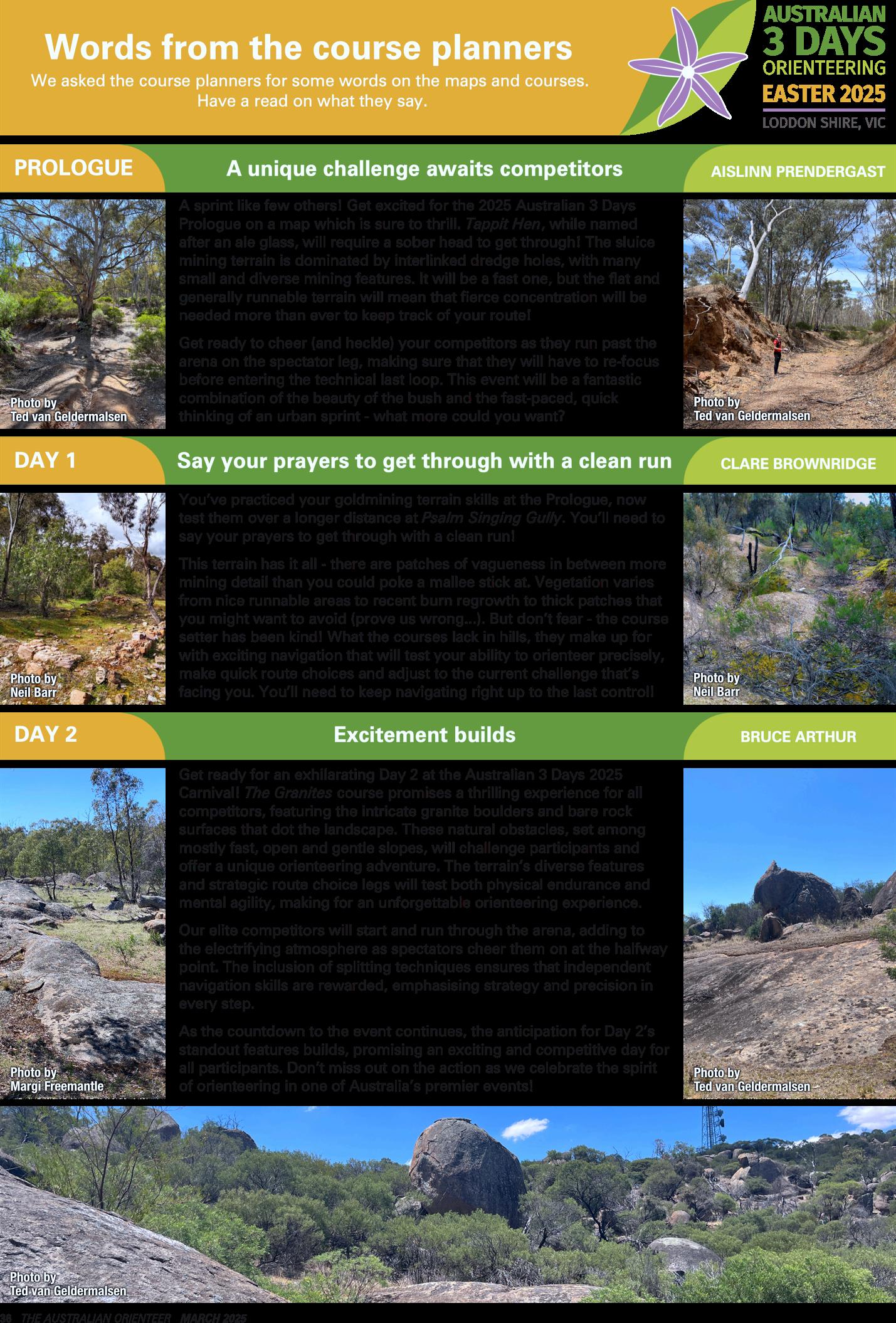



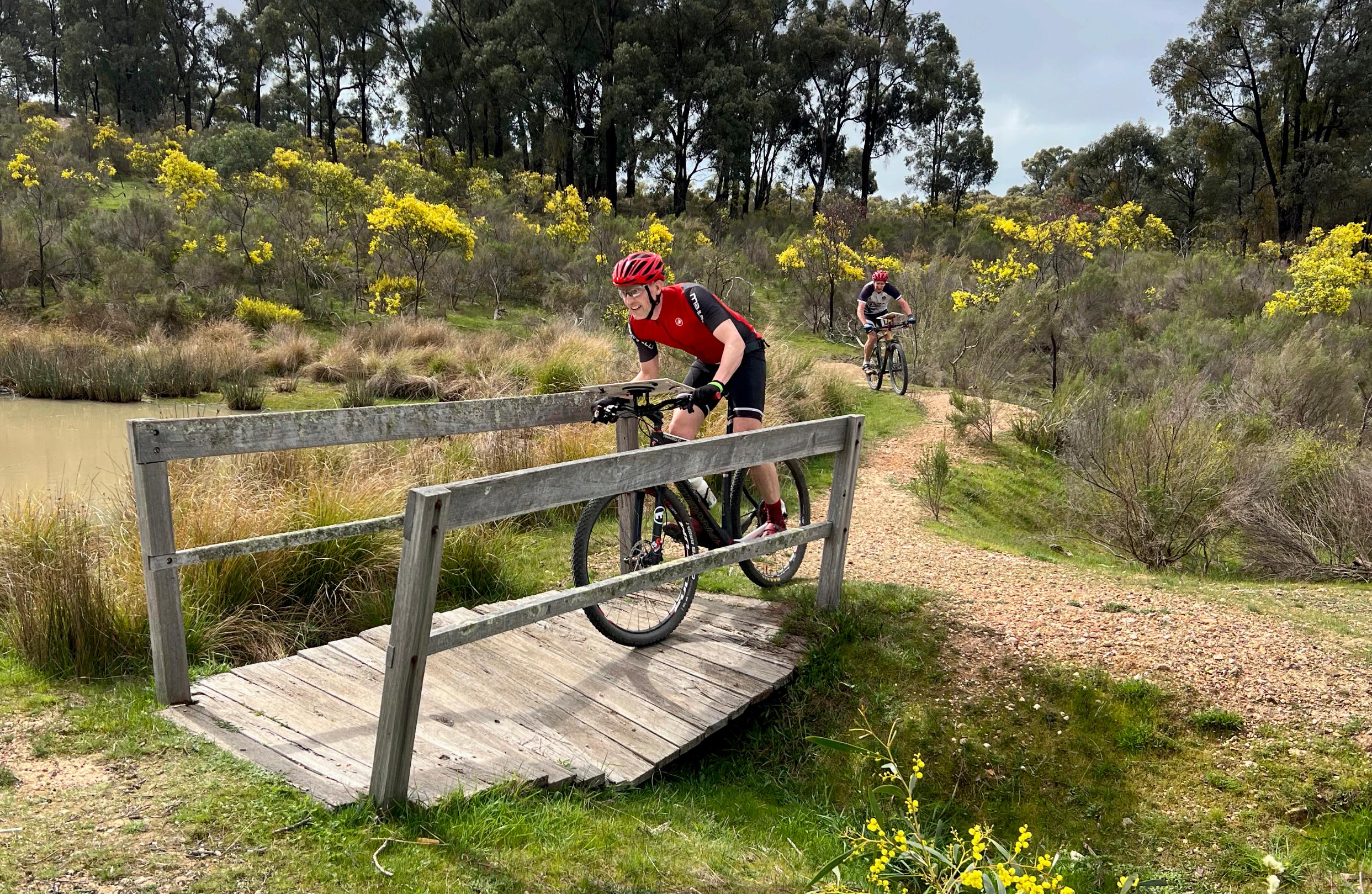




WOCARN


The 1985 World Orienteering Carnival (WOCARN) was devised to attract orienteers from throughout Australia and overseas to help recover the costs of the WOC85 mapping program by offering a series of events open to all. It also ensured that sufficient numbers of interstate orienteers would volunteer to help at WOC85 and that there would be no shortage of spectators on the championship days. Prior to 1985, World Orienteering Championships drew few spectators – ‘about 150 people in Scotland in 1976’.
Ten events were conducted over the 16-day period from 24 August to 8 September, each event on a map produced for WOC85. The event centre for the first week was at Creswick near Ballarat, and the first two events were the Victorian Individual and Relay Championships on new maps of Slaty Creek and the You Yangs respectively. Bendigo Sports Complex was the event centre for the second week which included a map run on Kooyoora the day after the WOC85 Individual, and concluded with the Australian Individual and Relay Championships. The relay was held on the northern section of the Wattle Gully Diggings map (not used for WOC85) and the individual on the adjacent Crocodile Reservoir map.
WOCARN was a joint venture of all Victorian orienteering clubs, with each club either organising or helping to organise an event or performing a major administrative function. It was a resounding success. The average number of competitors per event was over 1100, with a maximum of about 1500 entries for the Australian Individual Championships. Ever since 1985, a series of public events has been associated with each WOC, and this is WOCARN’s most gratifying legacy.
Mental training workshops were held online by visiting coach Hanne Hilo.
TEXT BY LEILA HENDERSON,
The mental training workshops focused on mental, technical, and dry training preparation for major orienteering races. Hanne shared many of her experiences en route to becoming a champion, including her preparation for the 2022 and 2023 Junior World Orienteering Championships (JWOC).
‘Due to extreme heat, the 2022 JWOC sprint races were the only events held, requiring last-minute adjustments’, Hanne said. ‘Mental preparation was the key. You need to be prepared for anything’.
Given Hanne took out both the Australian Long Distance and Sprint champs just two days after arrival in the country, we listened closely to her advice. Her key strategies included detailed map analysis, visualisation, and psychological preparation. Hanne highlighted the importance of setting goals, understanding race conditions, and practising in similar terrains. The discussions also covered the benefits of team collaboration and the creation of a shared Google Drive for better preparation.
Hanne has held four online workshops through November to December – these are available online as recordings. The first workshop was in person, with a review of the Australian Long Distance Championships 2025.
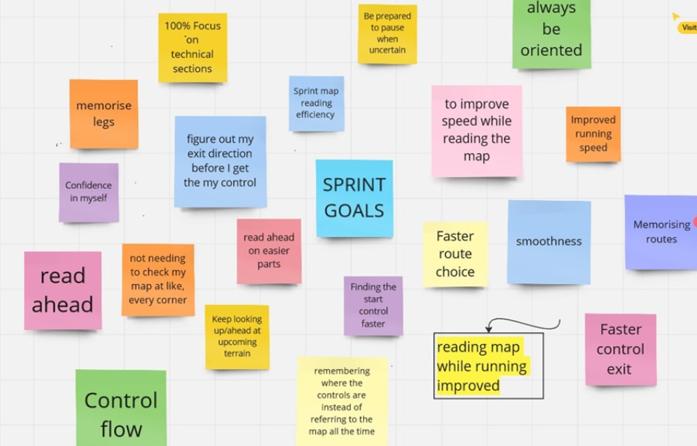
The ’whiteboard’ shows some of the ideas that participants posted as part of their ’game plan’ for sprint orienteering.
Following are links to four of the recordings:
(1) Topic—Dry Training, analysis and setting goals Passcode: Jp.LV@j9
(2) Topic – Game Plan and how to avoid mistakes Passcode: 6c*!7yCF
(3) Topic - Motivation Passcode: 2hV@UC85
(4) Topic – Preparation for big races Passcode: +hmti9Bb
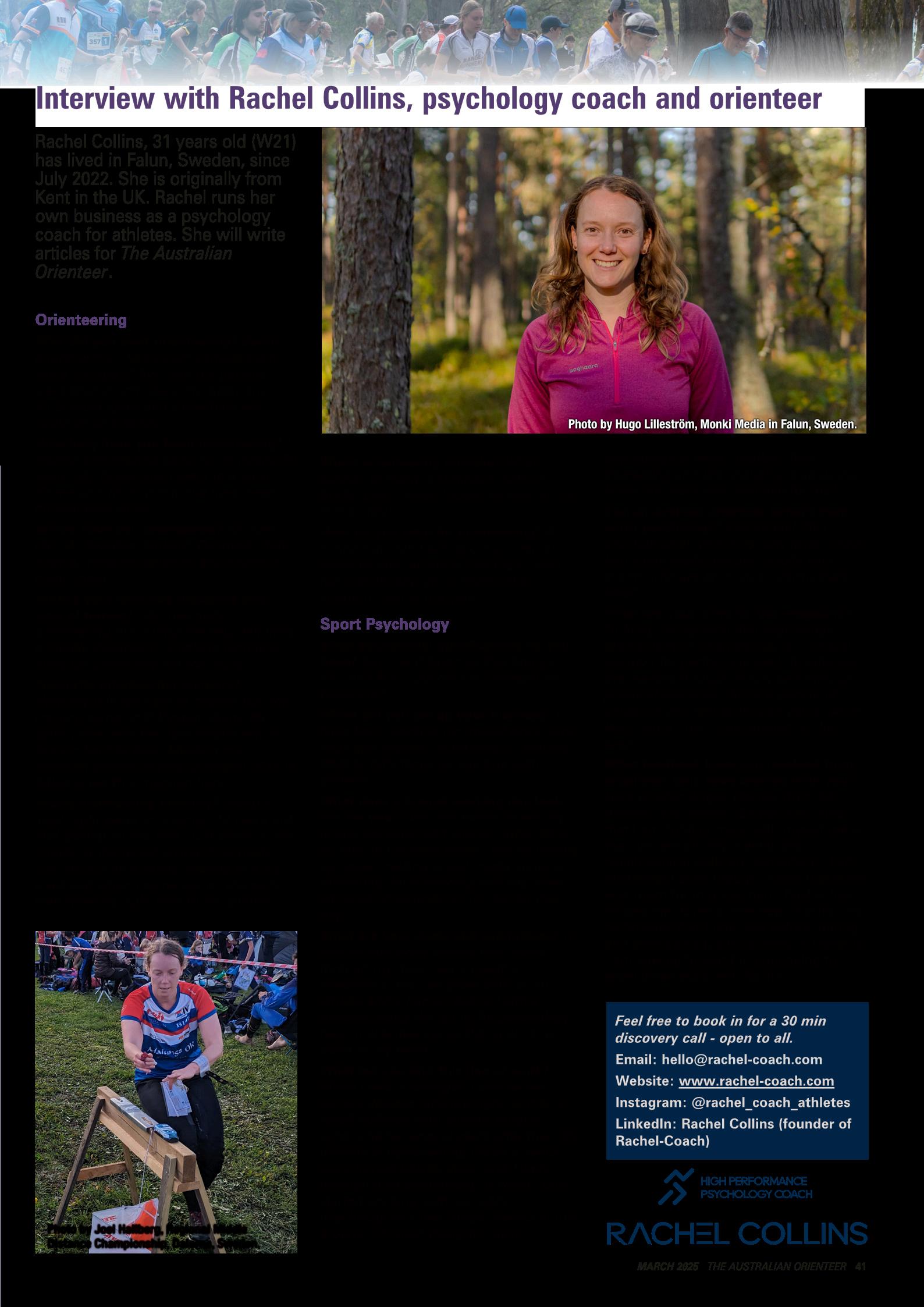
COURTESY OF ORIENTEERING AUSTRALIA WEBSITE
The IOF Council has made appointments to IOF Commissions for the next two-year term. Congratulations to the Australians who have been re-appointed or are new appointments!

Brett Weihart, Foot Orienteering Commission (re-appointment)

Responsibilities: Junior World Orienteering Championships, European Youth Orienteering Championships, IOF Fair Play Working group, Senior, Junior & Youth Regional Championships (North America and Oceania), Athletes Commission contact.
Craig Steffens, MTB Orienteering Commission (new appointment)
There are many new developments in MTBO Commission.
Learn more here: https://orienteering.sport/ mtbo/internal/mtb-orienteering-commission/
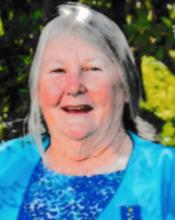

Liz Bourne, Environment and Sustainability Commission (new appointment)
The Environment Commission should aim at meeting at least twice a year. The meeting schedule should include the annual joint meeting of the Council and Commissions, and the biennial IOF Congress.
Fredrik Johansson, Map Commission (reappointment)
The Map Commission should aim at meeting two times a year. The meeting schedule should include: the annual joint meeting of the Council and Commissions, and the biennial IOF Congress.
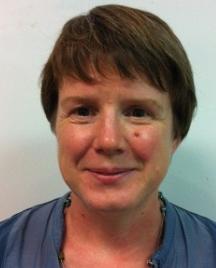
Jenny Casanova, Rules Commission (new appointment)
The Rules Commission should aim at meeting twice a year. The meeting schedule should include the annual joint meeting of the Council and Commissions, and the biennial IOF Congress.
BLAIR TREWIN, IOF COUNCIL MEMBER, OCEANIA
The IOF Commissions are, in effect, the IOF’s subcommittees, providing advice to IOF Council on their issues of responsibility, although IOF Council (the equivalent of the OA Board) remains the ultimate decisionmaker for most major matters. Some of the Commissions deal with specific disciplines (foot orienteering, MTBO, Ski-O and Trail-O), while others cover matters which affect all four formats (e.g. Mapping, Rules) or operate across the sport as a whole (e.g. Global Development, Environment and Sustainability).



Like the Council, the Commissions hold most of their meetings virtually. There is an annual meeting which includes both the Council and Commissions, which is held in January; in 2025 it was in Istanbul. Council has a second in-person meeting at World Orienteering Championships (WOC), and some of the Commissions also have meetings at WOC (or their discipline’s WOC where applicable).

COURTESY OF ORIENTEERING AUSTRALIA WEBSITE
National squads provide elite athletes with support and guidance through access to national training camps and Orienteering Australia (OA) High Performance coaches. Two squads have been established within the OA High Performance structure.
High Performance Squad (HPS) is designed to meet the needs of athletes aiming to excel at the World Orienteering Championships. HPS supports athletes striving for top 30 placing at world championships or top 40 placing in a world cup round in the following three to five years. Discipline-specific groups, sprint group and forest group, within this squad will assist athletes to optimise their performance for their preferred event.
2025 High Performance Squad
Mikayla Cooper, Grace Crane, Aislinn Prendergast, Nea Shingler, Emily Sorensen, Caitlin Young
Matt Doyle, Alastair George, Angus Haines, Pat Jaffe, Henry McNulty, Brodie Nankervis, Ewan Shingler
National Development Squad (NDS) is designed to meet the needs of developing orienteers aiming for representation at Junior and University World Championships. NDS supports athletes striving to represent Australia at a Junior or University World Championships in the following three years. Where appropriate, athletes may be invited to join activities with discipline-specific groups run within the HPS.
2025 National Development Squad
Kate Braid, Gemma Burley, Zoe Carter, Erika Enderby, Julia Gannon, Mikaela Gray, Justine Hobson, Milla Key, Natalie Miller, Ana Penck, Liana Stubbs, Sophie Taverna Torren Arthur, Euan Best, Oscar Brown, Alvin Craig, Duncan Currie, Ryan Gray, Cooper Horley, Toby Lang, Oskar Mella, Ethan Penck, Owen Radajewski, Leith Soden, David Stocks, Niko Stoner, Callum White, Jamie Woolford, Sam Woolford
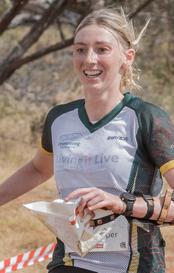
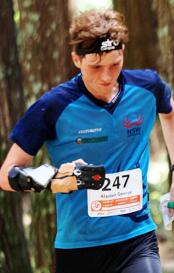

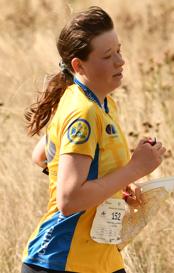
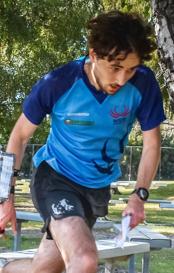


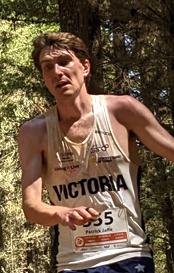
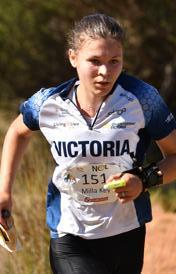

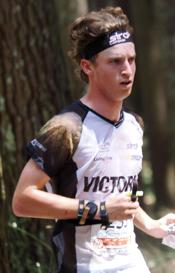

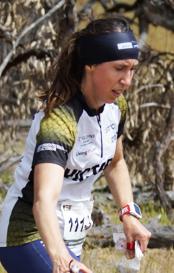
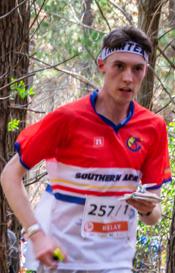


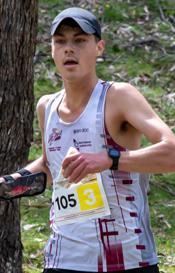


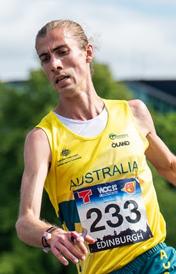
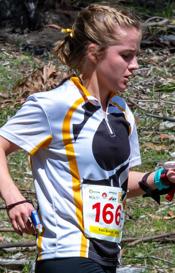
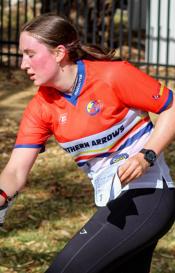
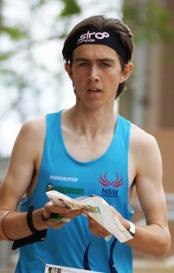

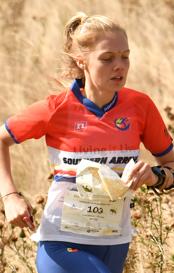
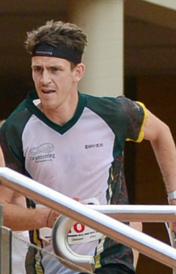
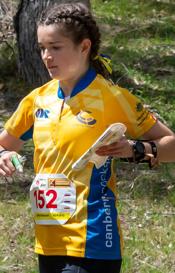


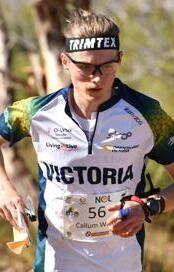


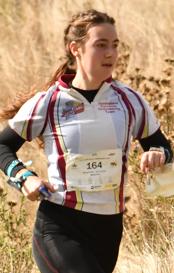
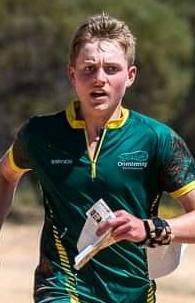
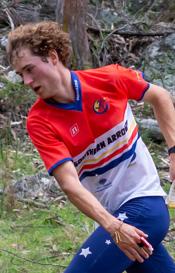
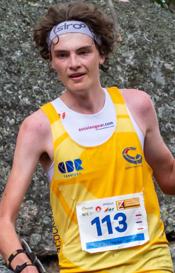



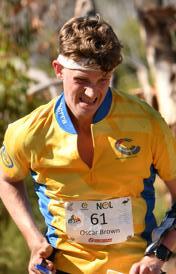

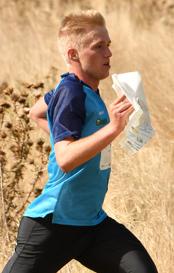
Exploring the intriguing technology behind orienteering so you can use it too!
COACH TECH-O AND CHATGTP
If the future* is all about technology, then orienteering has taken another step into the future with MapRun. We traditionally relied on paper maps and physical control points… Then SportIdent brought in electronic punching… now MapRun is giving us a tech-savvy way to orienteer. This is an app that can improve your training and some events are now being organised as specifically MapRun events.
What is MapRun?
[MapRun is an application for orienteering designed and managed by the Australian orienteer, Peter Effeney]. The core idea of MapRun is simple: instead of using traditional maps and punching control points, you use your phone’s Global Positioning System (GPS) to track your progress as you navigate from checkpoint to checkpoint. When you reach a designated control, the app logs it for you.
All of this happens seamlessly, without the need for physical markers or a paper map… but orienteers love to have a paper map in our hand, so print one out or if you’re participating in an event, the course planner will usually give you one!
How does it work?
To get started with MapRun, you first download the app, which is available on both iOS and Android. Once you’re in, you can either create your own course or choose from a variety of preexisting ones. MapRun can be handy to use for your training or local competition. Tracking your route and time is useful as a tool to help you reflect on your performance or to compete and compare with others.
QuickStart: make your own course, fast
MapRun’s QuickStart feature allows you to create a GPS-based course directly on your phone without needing a map or pre-set course. Simply drop pins on the satellite image to position controls, reorder them, and save the event. It’s a quick, easy way to set up local, personalised courses. Rather than a weeknight run, why don’t you make it an orienteering course?
THIS TEXT APPEARED AS THE EDITORIAL IN COMPASS SPORT DEC 2024
NICK BARRABLE, EDITOR OF COMPASS SPORT
We are all aware that our sport requires volunteers. In many ways it is still an amateur sport which has not come very far in the last 50 years, heavily reliant on people giving up their time to make events happen. Even an average colour-coded event will need people on the start, finish and download, SI/ EMIT, car parking, as well as your planner, organiser, controller, plus others. However, there are some who are in clubs who rarely volunteer. Many clubs complain that ‘it’s the same people doing the jobs all the time and they are not getting any younger’. Where will it all end? Can the sport survive?
There is definite potential for thinking out of the box here. We want to carry on being able to O indefinitely, but the way we deliver and the way we pay, might need tweaking. I know of one club at least who pay all their organisers. Yes, you heard me. Funnily enough, they are never short of organisers now. And it is the young 20 somethings – probably who need the money most – who are stepping up. They do the bulk of the work
CheckSites: make your own course, properly
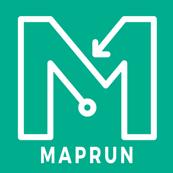
MapRun's CheckSites feature allows organisers to test and publish confidential events. You can also use this feature to set up a simple event for your own private use or for your athletes. Upload a map (KMZ) and a course (KML) file at the MapRun console. Using a six-digit code in the MapRun app, you can view the map and run the course.
AnyTrack: use a GPS watch instead of a smartphone
MapRun’s AnyTrack feature allows you to participate in events using any device that uploads GPS tracks to Strava. You simply record your track, sync it to Strava, and use the MapRun app to create a result. It supports all event types and is ideal for participants without a smartphone or a Garmin or Apple GPS watch (it’s easier for those watches!).
Limitations
Because MapRun relies on GPS, its accuracy can vary depending on your location. Dense forests, city streets with tall buildings, or areas with poor satellite reception can affect the app’s performance.
While it’s a great tool for combining control punching, timing and tracking routes, MapRun doesn’t fully replicate the traditional orienteering experience. However, it’s a fantastic supplement to make organising easier, improve your training and push orienteering further into the future.
* Talking about future technology, this was written by Artificial Intelligence (AI), 75%, and Coach Tech-O, 25%!
Editor’s note. While writing by humans is preferred to AIgenerated content, this article is being published because it is about technology, it has been checked, and it is prompting us to produce guidelines about AI use in the magazine.
setting up the event and making it happen, and the volunteers roll in on the day to offer their two hours. It seems to be working for them.
Is it time to shake up the ‘pay and play’ modus operandi we have in O? Why don’t clubs offer different membership options? Why not offer an annual membership of say £X00, which gets them free runs to all club events, and absolves them for any need to ‘volunteer’? I know people who don’t want to be in a club because of the hassle, even nagging, by the club to help at every event the club holds. They want to orienteer, not park cars. With the extra money you can then afford to pay organisers, and maybe more officials, and offer subsidised or free runs to the volunteers who do help. There are clubs who offer free runs already to those who volunteer. Many offer discounted runs. And why not? If you have five figures in the bank account, you need events putting on and want to encourage helping, you don’t need the money sitting in the bank.
Is it time we start to relook at all this: membership fees, paying officials and encouraging volunteers? Wouldn’t it be great if people were queuing up to put on events and volunteer?
VICTORIA GREENHAN
Istarted orienteering in a school team in Hong Kong when I was 12 years old, and did it until I was 17 years old. I put my orienteering activities on hold when I came to Australia as an 18 years old due to inconvenience to travel to events without my own vehicle. I resumed orienteering activities around six years ago to keep fit. I started with power walking, and gradually built my strength and stamina back to jogging and running.
Orienteering is uniquely attractive to me, compared to other similar sporting activities, such as running, for its variation of maps and locations. It is more fun and challenging with careful planning of my own route according to my physical wellbeing on the day and comparing to the type of terrain that might fit my style.
My children were introduced to the Suburban Adventure Race organised by Geoff Hudson in 2021, and had a good feeling about the sport finding the same benefits as I have. With the COVID lockdown in 2020, orienteering became one of the few options for physical activities. With more frequent participation, my children fell in love with the sport, and we started to go to regular weekly park and street orienteering, and bush orienteering.
There are a few challenges when starting orienteering.
1. Transportation costs. Travelling to weekly, and more than once a week events, around southeast Melbourne or sometimes to outer suburbs or northern suburbs, quickly adds up fuel costs. This issue was somewhat addressed once we got an electric vehicle and solar panels.
2. There is not much formal training available for beginners. We learned by common sense and map reading. Whilst that is OK for park and street orienteering, with the added safety of modern smart phones, all with GPS function in case of being hopelessly lost, but bush orienteering was much harder until we did a basic course, and learned basic map reading with compass skills from senior members.

The experience in bush orienteering is incredible for city dwellers such as our family as the courses take us to see various sites which we would not otherwise plan to see ourselves. For the kids, they are also enjoying the benefit of learning time management skills and learning the limits of their bodies when put under physical stress, and how to manage their stamina throughout the run.
In the future, once our children are more mature and have their own schedules or life plans, my husband and I are planning to purchase a caravan and travel around Australia to attend other states’ orienteering events.
NEW SOUTH WALES
CentralCoastSummerSeries4-GreenPoint (28 starters) RiverandBaySeries6-LittleBay (52) WaggaroosSummerSeries2024-252 (?)
QUEENSLAND
MapRunParks2024-KalingaPark (20)
SOUTH AUSTRALIA
OSAPresentationEveningwithsprintandMAZE-O (46)
VICTORIA
CoffeeSupreme-orienteeringandcoffee (30) SummerShortsandSprints7,SalesianCollege (79) VictorianSprintChampionship,TarneitCollege (124) DynamicDuoRelay,TarneitCollege (80) AWOCAGM&NoveltyEvent (?)
WESTERN AUSTRALIA
Albany-NASHS&SRT (10)
SummerSprint1-LumenChristiCollege (68)


SPORTIDENT.COM
After more than 27 years of reliable service, we are announcing the end of life for the SI-Card5 and SI-Card6.These cards, introduced in 1997 and 2002 respectively, have stood the test of time – but as technology evolves, it’s time to move forward. Future SPORTident products and product updates will no longer support the SI-Card5 and SI-Card6.
What does this mean for you?

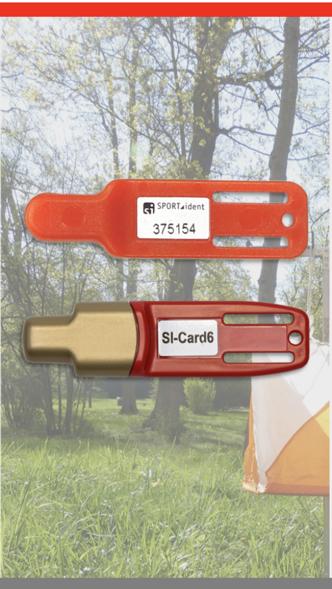
All SI-Card5 and SI-Card6 will continue to work with the existing stations and other SPORTident hardware as they are today. However, future SPORTident products and product updates (including firmware) will no longer support these cards.
We strongly recommend upgrading to the SPORTident Active Card or SI-Card9 to benefit from the latest features and innovations.Thank you for being part of the SPORTident journey! We are excited to continue delivering the best in orienteering technology to you.
U23 World Ski Orienteering Championships and Ski-O World Cup Round 1 2025
U23 World Ski Orienteering Championships 2025 in Norway were won by Niklas Ekström (FIN) in men’s sprint and pursuit, Amanda Yli-Futka (FIN) in women’s sprint, middle and pursuit, and Teodor Mo Hjelseth (NOR) in men’s middle.
The World Cup 1 round for senior athletes resulted in Jørgen Baklid (NOR) and Jonatan Ståhl (SWE) sharing the win in the men’s sprint. Baklid also won the middle and pursuit competitions. Daisy Kudre-Schnyder (EST) prevailed in women’s sprint, while Anna Ulvensøen was the fastest in women’s middle and pursuit. There were athletes from 14 federations, including Japan and USA.
World Orienteering Week
Register your orienteering event for World Orienteering Week, May 17 to 25.

AUS
CZE
Quiz answers: 1D, 2A, 3A.
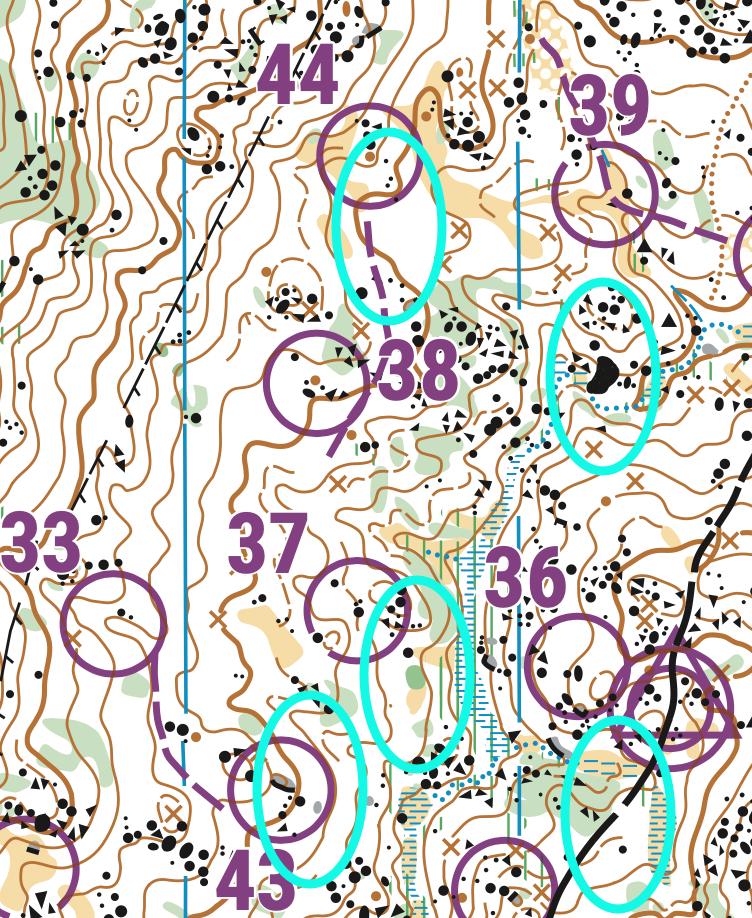
Glossary of acronyms
ANZ Australia New Zealand
AO The Australian Orienteer
AOC Australian Orienteering Championships
ARDF Amateur Radio Direction Finding
ASC Australian Sports Commission
ASOC Australian Schools Orienteering Championships
AsOC Asian Orienteering Championships
DNF / DNS Did Not Finish / Did Not Start
EOC European Orienteering Championships
EOD Enter On the Day
EYOC European Youth Orienteering Championships
IOF International Orienteering Federation
JWMTBOC Junior World Mountain Bike Orienteering Championships
JWOC Junior World Orienteering Championships
MTBO Mountain Bike Orienteering
NOL National Orienteering League
OA Orienteering Australia
WMTBOC World Mountain Bike Orienteering Championships
WOC World Orienteering Championships
WRE World Ranking Event
WTOC World Trail Orienteering Championships

March 19-23





















Junior World Ski-O Champs 2025, and European Ski-O Champs 2025
Posio,Finland
April 18-21 AUS 3 Days Carnival Loddon Shire, Victoria
April 18-21 NZ O Championships Canterbury, New Zealand
May 1-4
May 14-18
WMMTBOC 2025 Murcia, Costa Calida, Spain
MTBO World Cup, European MTBO Champs & European Junior & Youth MTBO Champs Lithuania
May 17-30 World Masters Games 2025 Taipei, Taiwan
June 14-15 Jukola 2025 Mikkeli, Finland
June 19-21
June 28 - July 4
July 7-12
Orienteering World Cup Round 1
Idre Fjäll, Sweden
JWOC 2025 Bormio, Italy
Forest WOC 2025 Kuopio, Finland
July 17-20 European Youth Orienteering Championships Czechia
Aug 6-11 The World Games 2025 Chengdu, China
Aug 9-15
Aug 11-17
Aug 16-22
WMOC 2025 Girona, Spain
WMTBOC & JWMTBOC 2025 Warsaw, Poland
World ARDF Championship 2025 Birštonas, Lithuania
Aug 26-31 EOC 2025 & World Cup Round 2 Antwerp, Belgium
Aug 26-30 Asian Junior & Youth O Champs Shitara, Japan
Aug 26-30 World Trail O Championships 2025 Hungary & Slovakia
Sep 5-7



May 27-31
June 29 - July 4
July 6-11
Aug 5-9
Aug 7-14
Aug 25-30
Preliminary dates
Sept 9-13
Preliminary dates
Sep 23-27
Sep 26 - Oct 4
May 21-29
Preliminary dates
July 11-17
Orienteering World Cup Round 2
Sweden
JWOC 2026
Karlskrona, Sweden
WOC 2026
Genova, Italy
Orienteering World Cup Round 3 Czechia
WMOC 2026
Rzeszów, Poland
WMTBOC & JWMTBOC Mora, Sweden
WMMTBOC 2026
Forres, Scotland, UK
Orienteering World Cup Final & EOC 2026, Lithuania
Oceania O Championships 2027, ASOC & SCJC 2026, ACT
WMOC 2027
Japan
JWOC 2027
Kłodzko Valley, Poland
Aug 9-14 WOC 2027
Aug 10-16
Preliminary dates
Veszprém, Hungary
WMTBOC & JWMTBOC
Latvia


AUS MTBO Championships 2025 WA
Sep 18-21 U23 WMTBO Championships Stara Zagora, Bulgaria
Sep 25-29
Sep 27 - Oct 5
Orienteering World Cup Final Uster, Switzerland
AUS Champs Carnival 2025 Brisbane, Queensland
Jan 24-26
Preliminary dates
March 1-6
Oceania Champs 2026, Sprint Central Coast, NSW
World Ski-O Champs 2025
Japan
Apr 3-6 Australian 3 Days & Australian Championships 2026 Tasmania
Apr 24-26 Orienteering World Cup Round 1
Switzerland


